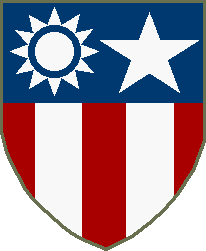
 CHINA - BURMA - INDIA
CHINA - BURMA - INDIA
Remembering the Forgotten Theater of World War II

 CHINA - BURMA - INDIA
CHINA - BURMA - INDIA
Remembering the Forgotten Theater of World War II |
|
|
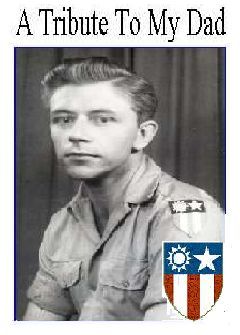 A Tribute To My Dad This site was created as a tribute to my Dad and his service in the China-Burma-India Theater of World War II. It tells the story of his three years in the U.S. Army including the 2½ years he spent in CBI. Photos Dad brought back are used to tell the story and the site contains all his CBI memorabilia, including his Army service documents. Also included is a brief history of the China-Burma-India Theater and information about General Stilwell, Merrill's Marauders, the Services Of Supply, etc.  The Ledo Road Searching for information on the internet, I could not find a single comprehensive site that told the story of the building of the Ledo Road. In fact, many searches for "Ledo Road" resulted in "see Burma Road." I set about to build a site about the road that told the story in words and images. This site is a result of that effort and to this best of my knowledge it is the most complete site about the Ledo Road. It features over 300 images of the Ledo Road and related subjects, as well as engineer and convoy stories. 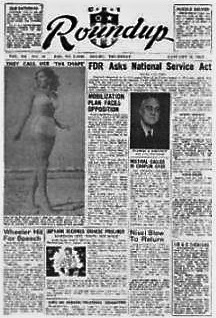 CBI Roundup Roundup was the weekly newspaper of the United States Forces, published by and for the men in the China-Burma-India Theater of World War II. Originally titled CBI Roundup, it became India-Burma Theater Roundup when CBI was split into the India-Burma and China Theaters. On these pages 186 of the original 188 Roundup newspapers plus 5 smaller Chota Roundup's have been re-created for the Internet. The history of CBI - written as it happened.  LIFE Reports and Pictorials CBI Theater Commander General Joseph W. Stilwell was featured on the June 15, 1942 cover of LIFE magazine. Throughout the war LIFE covered many aspects of the China-Burma-India Theater. This page is a menu to over 50 reports and pictorials related to CBI from original issues of LIFE, published 1940 through 1945. (Many of these pages can also be accessed from links below).  LIFE - The Ledo Road Famous for its pictures from around the world, LIFE during the Second World War featured many photographs from different theaters. This page contains the pictorial from the August 14, 1944 issue featuring "The Ledo Road." At the time the pictures were taken and the story written, the road was not complete, not yet having reached Myitkyina. 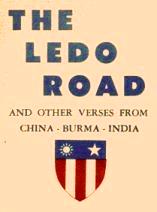 The Ledo Road and other verses from China-Burma-India Smith Dawless wrote what is widely recognized as the best soldier-written verse of World War II. Conversation Piece, about the building of the Ledo Road, was so closely associated with the road that it took its name and was often titled The Ledo Road. While serving in CBI, Sergeant Dawless also wrote many other verses about the experiences of a soldier in India and Burma. He published his works in The Ledo Road and other verses from China-Burma-India. All his verses are presented on this page, dedicated to Smith Dawless and his special insight into CBI.  Stilwell Road - Story of the Ledo Lifeline This booklet was prepared by the Information and Education Division of the India-Burma Theater. It was intended to familiarize truck drivers new to the theater with the Stilwell Road. The page contains images from the original booklet as well as the complete text from it. It tells the story of the building of the Stilwell Road written by U.S. Army personnel in 1945. 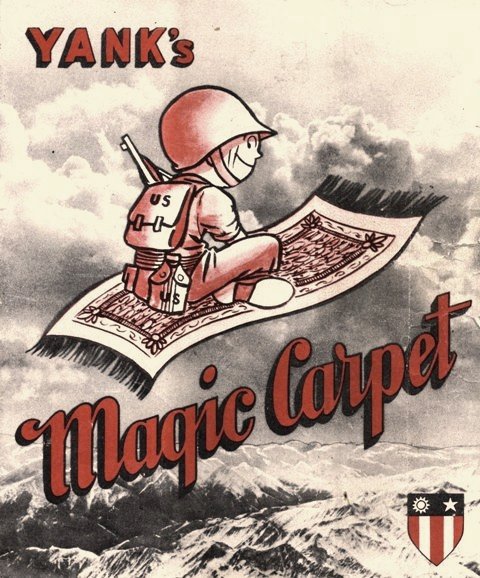 YANK's Magic Carpet A souvenir booklet specially prepared for U.S. Army personnel in China, Burma and India. Magic Carpet was the name given to the operation intended to quickly return U.S. personnel to the United States as the war ended. This page contains images from the original booklet as well as the complete text contained in it.  Nick Sanchez Walkout Diary On July 25, 1945, S/Sgt. Nick Sanchez was radio operator on a Combat Cargo flight over China. An engine fire forced the crew to bail out over China. Separated from the rest of the crew, Nick spent 17 days walking out of China back to an American base. During this time he wrote a diary in the Survival Guide he carried with him. This site contains all the pages from his walkout diary and links to the text version at the Combat Cargo site.  Pointie Talkie The Pointie Talkie was a booklet to be used as a communication device between American soldiers and the Chinese people. It used English words and Chinese characters side-by-side to allow the soldier to communicate by pointing to the Chinese phrase or word and then having the Chinese point to a reply. This page explains its use and shows sample of pages from a Pointie Talkie used in CBI.  Vinegar Joe Stilwell Stylized image and story of General "Vinegar Joe" Stilwell from a World War II historical trading card series. 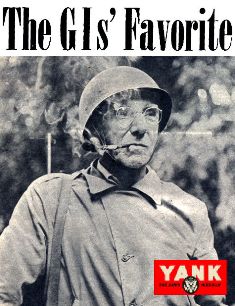 Stilwell: The GIs' Favorite This article, from the October 6, 1944 issue of YANK - The Army Weekly, contains pictures and a story about "Uncle Joe" Stilwell by YANK writer Ed Cunningham. Also featured is the cover photo of GI Sgt. Earl Rivard with "Souvenirs from Burma."  Burma Front LIFE's Reports: "U.S. General Stilwell Commands Chinese on Burma Front" by Clare Boothe. This short story preceded Burma Mission by two months. Clare Boothe writes of the worsening situation in Burma in April 1942.  Burma Mission This story from the June 15 and 22, 1942 issues of LIFE is by Clare Boothe. Later and probably better known as Clare Boothe Luce, she was a wartime correspondent for LIFE and traveled extensively to many theaters, including CBI. The story was excerpted from her diary and tells of her experiences with General Stilwell, his staff, and other U.S. forces in Burma. One month after the articles were published, Stilwell's forces took "a hell of a beating" and he led the famous walk out of Burma.  Stilwell's Flight from Burma A report from This Week's Events in the August 10, 1942 issue of LIFE magazine featuring a story and pictures of General Stilwell and his party on the 140 mile, 20 day walk out of Burma. 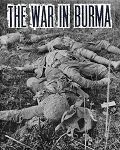 The War In Burma A pictorial from This Week's Events in the April 10, 1944 issue of LIFE magazine. Photographs by William Vandivert feature General Stilwell and his Chinese troops during the Hukawng Valley campaign. Three-quarters of a mile from Maingkwan in northern Burma, the horrors of war were captured in photos, along what would become the route of the Ledo Road. 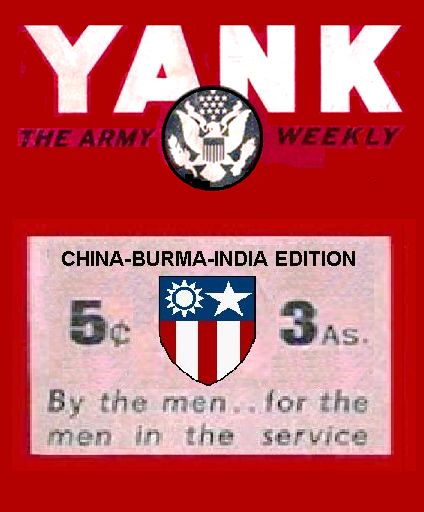 YANK - China-Burma-India Edition A five-part compilation of stories and features from China-Burma-India editions of YANK - The Army Weekly. Published weekly from June 1942 through December 1945, YANK was popular for its war stories, news from home, cartoons and its full-page pin-up girl (the reason many of these magazines did not survive intact).  Clearing the Burma Road A story from YANK - The Army Weekly. This story on the Burma Road comes from the March 17, 1945 China-Burma-India edition. The text is exactly as it was written in the original story and images are of the original pictures.  Convoy Sidelights Another page containing a story from YANK - The Army Weekly. This one contains short sidelights from a YANK writer traveling with the first convoy over the "Ledo-Burma Road." The first paragraph describes the confusion over what to call the road, as the name "Stilwell Road" had just been announced by Chiang Kai-shek. 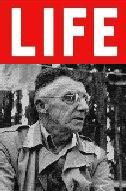 Joe Stilwell's War The pictorial from the April 17, 1944 issue of LIFE featuring General Stilwell's Chinese troops in action in the Hukawng and Mogaung River valleys of northern Burma during late 1943. 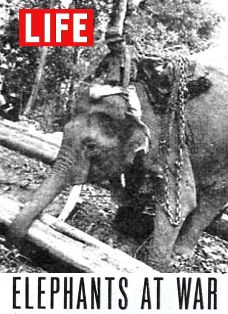 Elephants at War From LIFE's Reports in the April 10, 1944 issue, a story about "Elephant Bill" and the big beasts that worked for the Allied armies in Burma.  YANK's Dave Richardson A short story tribute to YANK correspondent Dave Richardson in the CBI Theater. Thought to be the most decorated correspondent soldier of World War II, he was known for becoming an active fighting part of the unit he was covering. Stories he wrote are featured on Clearing the Burma Road, Convoy Sidelights and Rangoon Jump pages. 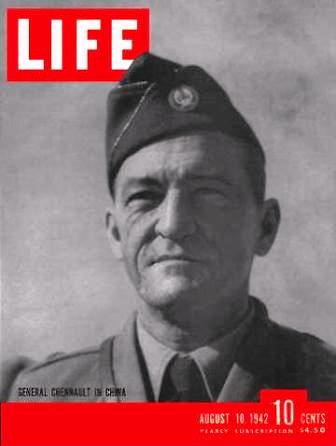 Chennault Fights to Hold the China Front A Close-Up article on General Claire Chennault and his new air forces in China from the August 10, 1942 issue of LIFE magazine. The article was written following the disbandment of the American Volunteer Group (AVG) as they adjusted to Regular Army service.  A Pocket Guide to China The War Department prepared booklets to help familiarize U.S. soldiers with the country in which they served or might serve. They give interesting insight into the subject country as well as America during the Second World War. While most of the subjects are serious, some are unintentionally funny. They are interesting to read. This page is based on the original booklet, "A Pocket Guide to China." 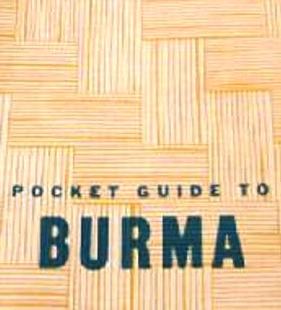 A Pocket Guide to Burma This page is based on the original booklet, "A Pocket Guide to Burma." The booklet describes Burma, her people, and how to get along while in the country.  A Pocket Guide to India This page is based on the original booklet, "A Pocket Guide to India." The booklet describes India, her people, and how to get along while in the country. Includes interesting explanations of the caste system and religions.  Chinese Language Phrase Book This site features the introduction, instructions, and example pages from an original "Chinese Language Phrase Book" issued December 1943 by the War Department, Washington, D.C. and intended for soldiers in the CBI Theater. Common phrases which might be used by a soldier attempting to communicate, were followed by pronunciation instructions to speak the phrase in Chinese. BOO~OO YOW! / KUH! chee. 
Illustrations from Cantonese Language Guide This page features the comic images used to illustrate the various Language and Phrase Books issued by the War Department for use in CBI. Images on this page are from the "Cantonese Language Guide." 
Survival Guide Interesting images and instructions from a U.S. Army Air Force Survival Guide used in the CBI Theater. This is not the complete manual, but images and text about jungle survival as related to flyers who may have bailed out or crash landed during missions over CBI. 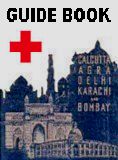
Red Cross Guide Book to India Based on the original booklet, "A Guide Book to Calcutta, Agra, Delhi, Karachi, and Bombay," published by the Red Cross of the China-Burma-India Command. An interesting look at major Indian cities during World War II. Includes maps and directories of points of interest. 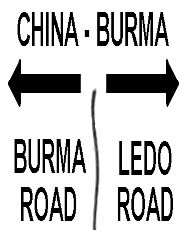
Confusion Beyond Imagination: Ledo Road Signs Soldiers in the CBI Theater were familiar with Confusion Beyond Imagination, an alternate definition for the initials CBI. This page explores some of that confusion displayed on signs along the Ledo Road including one at the ceremonial junction of the Ledo and Burma Roads. 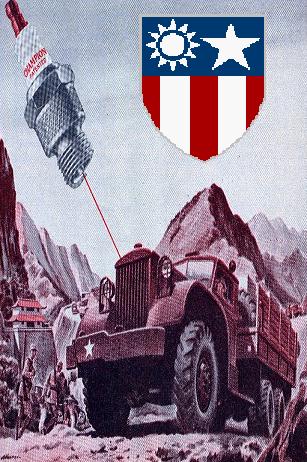
Advertising CBI "We are now in this war. We are in it all the way. Every single man, woman and child is a partner in the most tremendous undertaking of our American history." Those words spoken by President Roosevelt on December 9, 1941, were embodied in advertising during the war. Just about every magazine ad featured, or at least made reference to, the war. This site features CBI Theater-related and other interesting printed advertisements. 
LIFE Goes Over the Stilwell Road A pictorial from the March 12, 1945 issue of LIFE magazine featuring the first convoy over the Stilwell Road arriving in Kunming, China. 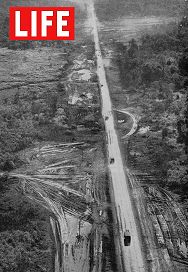
Stilwell Road A pictorial from This Week's Events in the February 12, 1945 issue of LIFE magazine. Subtitled "The first truck convoy since 1942 reaches China over new road," it contains scenes of the first convoy in the Myitkyina area (only about ¼ the way to China). Correspondent's stories and pictures took two weeks or more to reach the States. The article was published one week after the first convoy reached China. The latest available pictures therefore, were of the convoy at Myitkyina, from two weeks before. 
Hospital Units in CBI A list of hospital units in the CBI Theater and story of Army nurses in CBI. Includes some personal histories of China-Burma-India Veterans Association (CBIVA) member nurses. 
LIFE Photographer in Burma Photos by LIFE photographer George Rodger from 1942 Burma. Most of the photos are of Rodger's own escape from Burma by jeep and then by foot, ahead of the advancing Japanese. 
Rangoon Jump Another of the adventures of YANK correspondent Dave Richardson. This time he is with British and Ghurka paratroops on a mission behind enemy lines to clear the way for the sea-borne invasion of Rangoon. 
Yanks in India A short pictorial from a January 23, 1943 edition of Yank - The Army Weekly. "Of the men who bomb Rangoon" and "a transport's flight Over the Hump." 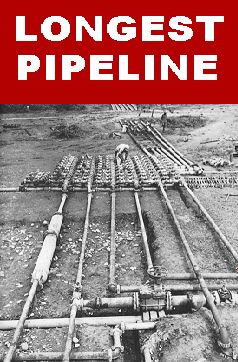
The Longest Pipeline in the World A pictorial from the December 8, 1945 CBI Edition of YANK - The Army Weekly featuring "The Longest Pipeline in the World" which ran from Calcutta, India, all the way to Kunming, China. Carrying fuel for trucks on Stilwell Road and planes flying missions against Japan, it was maintained by Engineer Petroleum Distribution (EPD) Companies. Tom Foltz, a member of the 789th E.P.D., provided the magazine on which this page is based. A short story from Tom is included. 
Building the ABC Pipeline From Ex-CBI Roundup comes this story of the building of the Assam-Burma-China section of the fuel pipeline from India to China. 
Fuel For Freedom The story of the Assam-Burma-China section of the pipeline that ran 1,800 miles from the docks of Calcutta to the Stilwell Road and air bases in China. This page was created using the original text document. Pipeline related images from various sources have been added to illustrate the original text. Leo (Sapienza) Leonhart, son of S/Sgt. Leo H. Sapienza of the 1381st EPD, provided the material on which this page is based. 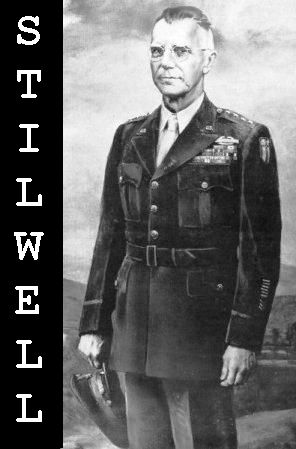
The Stilwell Pages General Joseph W. Stilwell in the China-Burma-India Theater. Stories, pictures and links to other sites about General Stilwell. Large slide show presentation of images of General Stilwell. 
Overseas Anniversary Banquet Bud Osborn organized a Two Years Overseas Anniversary Banquet for his outfit, the 3rd Squadron, 1st Ferrying Group, Air Transport Command at Chabua, Assam, India. This page contains the story of the party as well as Bud's original artwork from the banquet program. 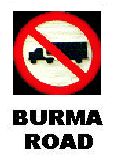
Burma Road Closed A report from This Week's Events in the July 29, 1940 issue of LIFE magazine on Japan's effort to strengthen the blockade of China by closing the Burma Road. The British, attempting to appease Japan, agreed to close the road for up to three months. The French had already closed their Indo-China Road, leaving Soviet Russia the sole route for supplies to China. Also included is a survey about the war titled "What the U.S.A. Thinks" 
LIFE Checks Up on the Burma Road When President Roosevelt needed an expert to go to China and check up on Lend-Lease supplies moving over the Burma Road, Harry Hopkins called ex-taxi driver Dan Arnstein for the job. Arnstein wrote this Life's Report which appeared in the October 6, 1941 issue. This article, published just two months before the attack on Pearl Harbor, details the problems he and his party found. 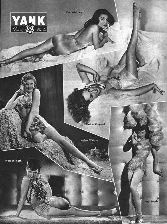
Pin-Up Girls of YANK Pin-Up Girls from the pages of YANK - The Army Weekly. While only a few actually visited China, Burma, or India, they all served in the CBI Theater. No doubt many a basha wall was brightened by at least a few of these ladies. Would anyone dispute their contribution to the war effort? 
One Pilot's Journey Bob Thompson preserved an incredible amount of information about his service in the U.S. Army Air Force in the CBI Theater during World War II. His collection of photographs, memorabilia and stories is contained on a CD-ROM that Bob made available for educational and historical purposes. This site provides but a glimpse of that history by bringing you Bob's stories, illustrated with images from his collection. 
Under Siege at Myitkyina The Allied capture of Myitkyina Airstrip began a 79-day siege for the town of Myitkyina. Correspondents covering the battle sought refuge under the wing of a disabled C-47. LIFE's Bernie Hoffman captured a photo of the correspondents and Tillman Durdin of the New York Times tells the story. David Quaid, Army combat photographer, looks back and comments on "Press Headquarters" at Myitkyina Airstrip. 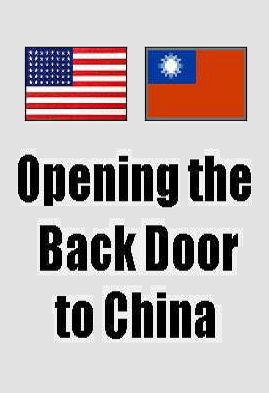
Opening the Back Door to China Stilwell's Campaign in Northern Burma summarized by Dave Richardson. A retrospective look at the land link to China and the impact of Merrill's Marauders, the Nisei Interpreters and the Ledo Road Engineers. 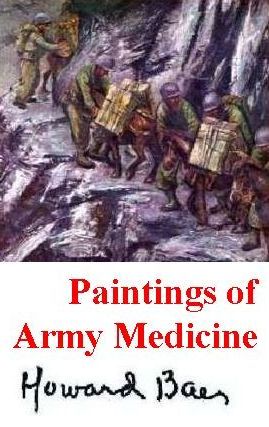
Paintings of Army Medicine During World War II, Abbott Laboratories commissioned Howard Baer as an Artist-Correspondent to depict the work of the Army Medical Department in the China-Burma-India Theater from April to September 1944. This site contains Baer's unique paintings of Army Medicine in CBI from the Abbott Collection. 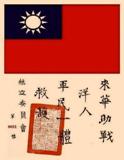
Blood Chits of the CBI Theater The first Americans ever to use Blood Chits were the American Volunteer Group Flying Tigers of the CBI Theater. Blood Chits were intended to identify downed flyers to friendly Chinese who were instructed to protect and help them. This site examines various Blood Chits used in the CBI Theater. 
Ramgarh Training Center Following the withdrawal from Burma in 1942, General Stilwell knew he would need a trained fighting force to retake it. American troops were not available. The Chinese soldiers available were under-equipped and poorly trained. He set up a Training Center in Ramgarh, India where thousands of Chinese troops were transformed by the U.S. Army into a well-equipped, well-trained fighting force. An untold story from the Forgotten Theater. 
Victory Over Japan From Pearl Harbor to Tokyo Bay, this pictorial moves quickly from the beginning of the war in the Pacific at Hawaii to the "inevitable triumph" over Japan. Includes images of the atomic bombings, V-J Day and various surrender ceremonies. Not forgotten is the China-Burma-India Theater. 
A Masterpiece of Design A short story from Ex-CBI Roundup about the origin of the CBI Shoulder Sleeve Insignia. A masterpiece of design generally recognized as one of the most beautiful of all the patches to come out of World War II. A link is included to a site showing many beautiful variations. 
On The Ground Glass On The Ground Glass was produced by the Photo Lab Section of the 7th Photographic Technical Squadron operating out of Bally, India from March 1944 until October 1945. Volumes 1 to 12 are shown on this site along with several Special Issues. These single photo sheets were produced in 1945 as a photo-newsletter. 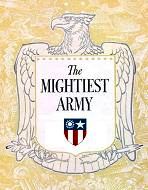
The Mightiest Army: CBI Theater Colonel Karl Detzer of the U.S Army General Staff Corps. wrote "The Mightiest Army" in 1945. It is probably one of the first historical summaries of the United States in World War II ever written, most likely in June of 1945. His book was published by the Readers Digest Association for no profit, with proceeds donated to the Army Emergency Relief Fund. Presented on this page is the chapter about the unique CBI Theater. 
National World War II Memorial The National World War II Memorial in Washington, D.C. is a magnificent tribute to the Greatest Generation. It honors all who supported the war effort from home, the 16 million who served in the Armed Forces of the United States, and the more than 400,000 who gave their lives in defense of freedom. Presented on this page are photographs of my visit to the Memorial. 
A Search of Sixty Years A story of Chinese-American friendship spanning sixty years. Wen Jiang tells of an American funeral in the heat of battle during the Salween Campaign and the search to discover the identity of the American soldier and his comrades remembered at the Tengchong Memorial Garden. Originally presented at the 2005 Annual Convention of the U.S.- China People's Friendship Association. 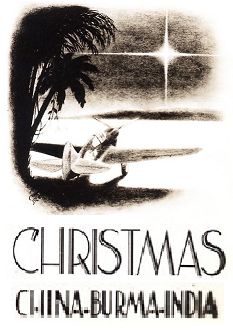
China-Burma-India Christmas Americans spent four Christmases in CBI during World War II. Here are memories of how this most special time of year was celebrated in all the traditional ways, in strange lands, 12,000 miles from home. V-Mail, cards, stories and photos of Christmas in CBI. 
Images of India 1945 Scenes of World War II India. Although close to the fighting front in Burma, there are no GIs and no signs of war in these photos. The pictures are those that a tourist might take while visiting Calcutta, Dibrugarh or Ledo. Jack Thomas took these pictures while serving with the 191st Signal Repair Company in Ledo. Includes Jack's story of his time in India, his collection of autographed pinups, currency and cartoon calendars from India. 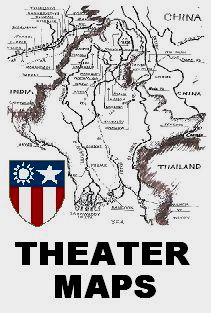
Maps of the CBI Theater Compiled here from various sources as historical reference are maps and illustrations of the China-Burma-India Theater. Map images are presented without caption or explanation. 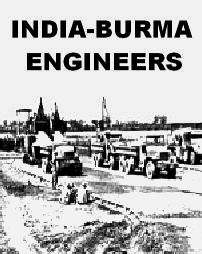
India-Burma Engineers From airfields to the Ledo Road to pipelines that eventually reached China, they did it all. Text from Public Relations Base Section and photos by the Army Signal Corps tell this short story of Engineers in the India-Burma Theater. Originally published in Ex-CBI Roundup. 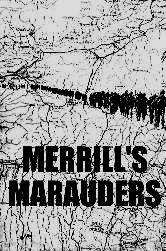
Merrill's Marauders In Burma Three thousand volunteers for a dangerous mission "somewhere," ended up in Burma as the 5307th Composite Unit (Provisional). Their actions against the Japanese earned them the name "Merrill's Marauders" after their commanding officer Frank Merrill. Their mission became a six-month battle through the jungles of Burma until they just wore out. Marauder Capt. Fred O. Lyons tells the story. Originally published in the July 1991 issue of Ex-CBI Roundup with photos from the March 1991 issue and other sources. 
Mars Task Force The 5332nd Composite Brigade (Provisional) was a long-range penetration force that carried on the fight begun by Merrill's Marauders. Mars was composed of the American 475th Infantry, 124th Cavalry, 612th and 613th Field Artillery (Pack) and other supporting units along with the Chinese 1st Infantry Regiment. A short story by Ralph E. Baird, originally published in the February 1997 Ex-CBI Roundup. 
The Jungle's Victory In 1946 Dave Richardson returned to CBI as a foreign correspondent for TIME magazine. He revisited Ledo, Chabua, Myitkyina and points along the Ledo Road. What he found was a trail of ruins, ruts and creeping vines. This story of his return visit originally appeared in NEW REPUBLIC and was reprinted in the July 1951 issue of Ex-CBI Roundup. 
Building the Ledo Road To open the Ledo Road in Burma, U.S. combat engineers did more than just build. A story of the 209th Engineer Combat Battalion and their dual role as road builders and combat infantrymen along the road and during the battle for Myitkyina. Originally published in World War II magazine. 
The Hoverfly in CBI Helicopters in World War II? Yes. Helicopters in CBI? Yes again. In fact, the first recorded use of a helicopter as rescue aircraft by the U.S. Military took place in the China-Burma-India Theater. Here is the story of that early helicopter by one who was there from the start. 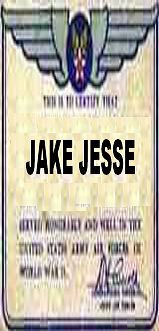
Jake Jesse in CBI Jake Jesse shares a large number of pictures from India and tells the story of his time in CBI with the 11th Air Base Communications Detachment. 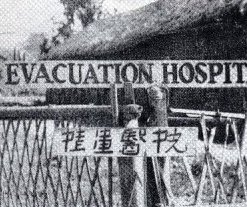
Evacuation Hospital The 43rd Evacuation Hospital was activated June 1, 1941 and redesignated the 14th Evacuation Hospital on August 15, l942. Its medical staff came from leading medical centers. Enlisted men, mostly draftees, lived in almost every state in the U.S. Milt Eisenberg was a Master Sergeant with the 14th Evacuation Hospital stationed on mile 19 of the Ledo Road, Assam, India from 1943 to 1945. Milt tells the story of his service and the 14th Evac. Hospital. 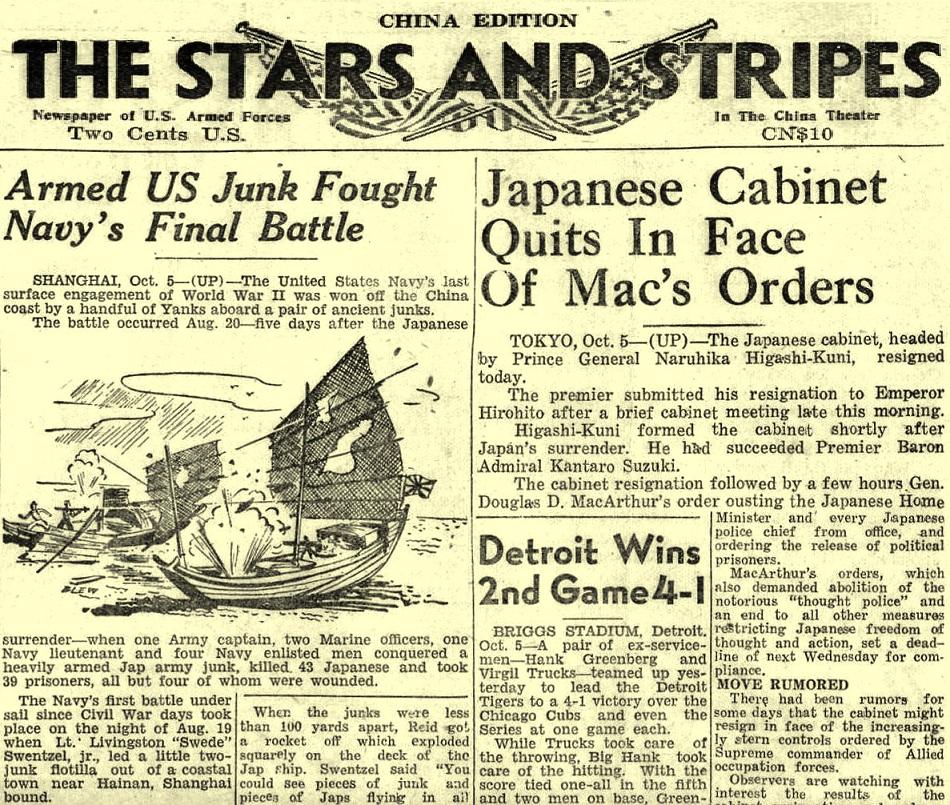
The Stars And Stripes China Edition Originally published during the U.S. Civil War by Union soldiers, The Stars And Stripes returned in World War I and again in World War II, and has been published regularly ever since. This page presents a compilation of five issues of the China Edition from September and October 1945. Stories and pictures of post-war China including the withdrawal of U.S. troops and the continuance of the Chinese Civil War. Original issues of The Stars And Stripes provided by CBI veteran Tom Miller. 
CBI Connections Significant People and Events related to the CBI Theater, compiled by Lt. Col. Joseph B. Shupe, USA (Retired), 30 year veteran of the U.S. Army, including service in the CBI Theater during World War II. 
330th Engineer Regiment Unit History The history of the 330th Engineer General Service Regiment as written by members of the unit in 1945. From Camp Claiborne, Louisiana, to Canada and on to India and Burma, this detailed history tells the story of one of the primary units that built the Ledo Road. Original document provided by Ron Bleecker, son of 1st Lt. Francis A. Bleecker, Executive Officer, Company "D" 2nd Battalion, 330th Engineer Regiment. 
Into The Wildest Blue Yonder The Memoirs of CBI Veteran Jack Russell. "Since I am now 82 years old and since I am no longer active in the military, I thought it would be safe now to put together a brief tale of my activities in that greatest war (WWII). Most of these stories my children have heard in their growing up years, so I write mostly for their children who may well have difficulty swallowing much of this." A story of flying in CBI. Lots of great pictures included. 
The Aerial Invasion of Burma The Japanese were threatening airbases in India, just over the Burma border to the west. The Chinese were holding mountain positions against the Japanese in east Burma. If General Wingate could establish his men behind the Japanese in North-central Burma and cut their various supply lines, the Japs would be put in a difficult position regarding Allied attacks on three of their Burma fronts. Here is the story of the First Air Commando Group as told by General "Hap" Arnold, Commanding General, U.S. Army Air Forces, in 1944. 
Lines of Communication The dictionary includes this definition of communication: "A network of routes for sending messages and transporting troops and supplies." The Lines of Communication in the CBI Theater included modes described by logisticians in Washington as the most fascinating and complex problems in the world. Joe Shupe examines CBI Lines of Communication which consisted of rail, water, rail-water, water-rail and limited highway routes. 
The Woman's Army Corps in CBI WACs were first sent to the 8th Air Force in England. Their satisfactory performance led to many requests from other theaters. From Air Forces in the CBI came a request for several hundred WACs, while the Far East Air Force asked for more than 2,000. Monthly shipments began in April 1944 and continued until, by January 1945, almost 7,000 WACs were serving with distinction in every major theater of operations. Less than 300 served in CBI. 
1st Provisional Tank Group The joint Chinese-American 1st Provisional Tank Group was as remarkable a unit as any raised in World War II. Commanded by Colonel Rothwell Brown, they fought in Burma supporting Merrill's Marauders and the Mars Task Force. Here is their unique story, as told by the men themselves, including Sgt. Leonard Farley, member of the 1st Tank Battalion, whose son Paul provided the material on which this page is based. 
Father Emil J. Kapaun - CBI Saint A story of Father Emil J. Kapaun from his friend and fellow CBI soldier Howard Sherman. Father Kapaun ministered to soldiers along the Ledo Road. When the war was over he stayed until everybody else had gone home. He again went to war with his fellow soldiers in the Korean War. Refusing to leave wounded and dying men, he was taken prisoner. "Wherever he stood was holy ground, and the spirit within him – a spirit of reverence and abiding faith – went out to the silent listening men and gave them hope and courage and a sense of peace." 
789th EPD Unit History The 789th Engineer Petroleum Distribution Company operated the first 350 miles of the 1,800-mile pipeline to China from Budge-Budge near the port of Calcutta to Pumping Station 13 at Dhubri in Assam. This is their unit history. Also included are unit commendations, pipeline maps, a copy of the company bulletin, a PX supply list for August 1945, tips on visiting Bombay and an original pipeliner's poem. Provided by CBI Veteran Tom Foltz of the 789th EPD. 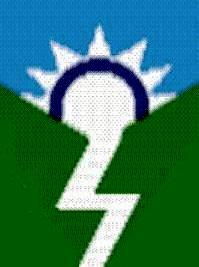
Ledo Road Insignia In April of 1944, with the Ledo Road progressing, General Pick approved a contest to design a new insignia for the road construction project. The contest was open to all who were taking part in the construction effort. Here is the story of the winning design and the origin of the "Road to China" theme. A link is included to S. Neal Gardner's Ledo Road page which shows many beautiful variations. 
Handbook of Burma and Northeastern India A handbook prepared by the Artic, Desert & Tropic Information Center of the U.S. Army Air Force. This page features the maps, diagrams, illustrations and interesting text from the handbook. The handbook is part introduction, part survival guide. Original booklet from the library of the Derby City Basha, CBI Veterans Association. 
Here's How "Here you are in China. The last place in the world you thought you would be..." A Handbook for American Troops in China published by United States Army Forces in the China-Burma-India Theater. An introduction to China, its people and customs specifically written for U. S. Soldiers in China during World War II. The emphasis is on keeping good relations between the Chinese and American "guests." Original booklet from the library of the Derby City Basha, CBI Veterans Association. 
Hindusthan Standard A re-creation of Calcutta's Hindusthan Standard newspaper published on August 16, 1945. The big news of the day was, of course, THE WORLD WAR ENDS. A look at events at the end of the war from a British-Indian point of view. Pages from the original VJ Day edition of the newspaper shared by CBI Veteran Charles Mette. 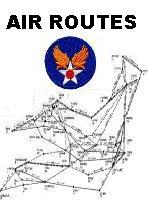
Assam-Bengal-China Air Routes Air Transport Command air routes between the many U.S. air bases in India and China. The maps give various details including distances between stations and radio frequencies along the route. Also included are the personal notes kept by Radio Operator Wendall Phillips. 
The Bull Sheet Twenty-two original issues of "The Bull Sheet," newspaper of the Ramgarh Training Center in India. A behind-the-scenes look at American men and women in CBI. No war news, but a wealth of interesting information from Ramgarh, where Americans trained and equipped the Chinese Army in India. The original issues of the newspaper were shared by CBI Veteran Chuck Louis. 
Hump Express The official newspaper of the India-China Division, Air Transport Command, was published by its Public Relations Office in Calcutta. Hump Express was a weekly newspaper that featured stories and photos of ICD operations in China, Burma, and India, all recreated here for the Internet. Twenty-seven original newspapers shared by CBI veterans Steven C. King and Grover P. Fike. 
The Calcutta Key An Internet adaptation of a guide to Calcutta prepared by Services of Supply, Base Section Two, Information and Education Branch, United States Army Forces in India-Burma. Intended for U.S. Army soldiers stationed in or visiting Calcutta, it gives a brief over view of the country and then provides information for soldiers on where to go, what to do, and of course what not to do. An interesting look at the Army, the world in 1945, and a part of CBI. 
The Command Post The newspaper of Headquarters, Base Section No. 2 in Calcutta, India. Eventually it became the newspaper of the China Theater and was called China Command Post. Shortly thereafter, a contest resulted in another new name, The China Lantern. Here are all the CBI stories, pictures and even cartoons from three original issues, recreated on the Internet. 
The China Lantern When the CBI Theater was split in two in October 1944, the Theater's newspaper, Roundup, stayed with the India-Burma Theater. The new China Theater of Operations had its own newspaper, The China Lantern. Here are stories and pictures from the original editions. News from the China-side of The Hump. 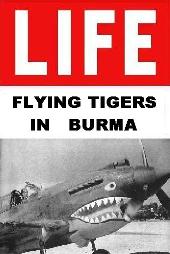
Flying Tigers in Burma A pictorial from the March 30, 1942 edition of LIFE Magazine featuring the famous American Volunteer Group Flying Tigers. 
China Crisis The story of Stilwell's recall and the China Crisis from the November 13, 1944 issue of TIME Magazine. 
Operation Matterhorn B-29's first struck Japan from bases in India and China. Without the experience gained by B-29 crews in the CBI Theater, the results of the war in the Pacific might have been different. Excerpted by Joe Shupe from the article, "Prelude to Armageddon" by former Air Force Chief Historian Dr. Richard P. Hallion. 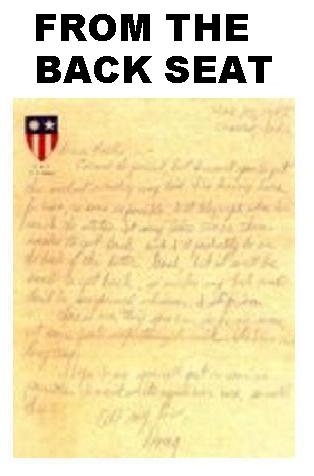
China, Burma, and India - From the Back Seat Flight Radio Operator Douglas Devaux's memories of flying the "Valley" and the "Hump" as a soldier in the United Sates Army Air Force during World War II. Doug put together a book, intended for his children and grandchildren, so that they would know more than just the fact that he served in CBI. He shares it here for all to know the flying adventures and the day-to-day life "from the back seat," the radio operator's position, for the Air Transport Command. 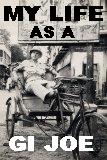
My Life as a G.I. Joe in World War II Tom Foltz, CBI Veteran of the 789th Engineer Petroleum Distribution Co. (E.P.D.) wrote this memoir of his time as a "G.I. Joe" in the U.S. Army in the CBI Theater of World War II. The story takes you from Ohio, across the Pacific in a Troop Ship to India, up and down "Infinity Line" pipeline, and finally, after three years, back home to "Uncle Sugar." 
The Rat-Trap of Burma LIFE magazine stories and pictorial from the May 18, 1942 issue reporting the early days of the war in Burma. "The Japanese Sweep Through Burma" describes the invasion of 1942. "How British in Burma Escaped a Jap Trap," is a first-hand report by correspondent Jack Belden of his experience escaping the invading Japanese. Photos show aftermath of Japanese bombing of Stilwell's Maymyo headquarters and Allied withdrawal along the Burma Road. 
Yanks Make a Hit in India LIFE'S REPORTS from the January 18, 1943 issue of LIFE about American soldiers getting along in the far-flung bases of India. 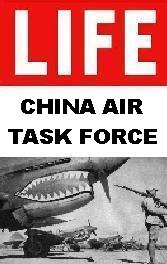
China Air Task Force The story of the China Air Task Force, which came after the American Volunteer Group and eventually became the 14th U.S. Air Force. A pictorial from the April 12, 1943 issue of LIFE. 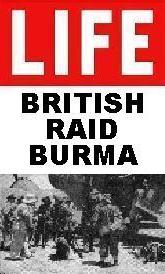
British Raid Burma The author of the story called them "Wingate's Mob." They are probably better known as Wingate's Burma Raiders. In addition to a story about the raiders, the pictorial features photos of air drops and evacuation of wounded by plane. From the June 28, 1943 issue of LIFE. 
American Makes Planes in India William D. Pawley formed Hindustan Aircraft, Ltd. in Mysore, India and built American planes for the British and U.S. Army air forces operating in the CBI Theater. This page features the story and pictures plus interesting advertisements from the March 22, 1943 issue of LIFE magazine. 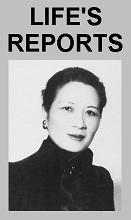
Madame Chiang in the U.S. Capitol LIFE's REPORTS from the March 3, 1943 issue is a story of Madame Chiang Kai-shek's visit to the U.S. Capitol, where she addressed the Senate and House. According to the introduction, "Mme. Chiang's three hours at the Washington Capitol on February 19 are inevitably a part of U.S. history. What she said and did there was up to the level of world events. Not only were Congressmen completely captivated by her but also hard-boiled reporters confessed they had never seen anything like it." 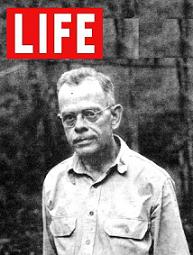
LIFE Visits an Army Hospital in Burma A pictorial of Dr. Gordon Seagrave's famous hospital high in the hills of Burma. Pictures of the doctors and Burmese nurses saving Chinese, American and native lives close to the fighting front. From the November 1, 1943 issue of LIFE magazine. 
Speech To Congress An editorial from the March 1, 1943 issue of LIFE regarding Madame Chiang Kai-shek's call for the U.S. to join China in war and in peace. 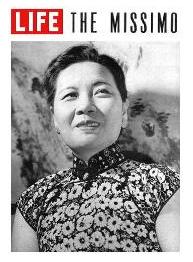
The Missimo This pictorial from the February 22, 1943 issue of LIFE is a brief look at the life of "The Missimo," Mei-ling Soong (Madame Chiang Kai-shek). 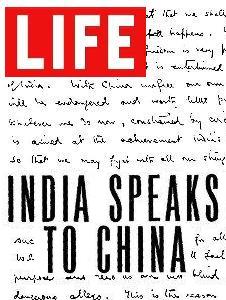
India Speaks To China Jawaharlal Nehru hand-wrote a letter to the people of China just before being jailed by the British for speaking out about India's independence. Nehru expresses India's support for China. From the March 1, 1943 issue of LIFE. 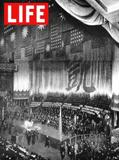
Mass Tribute to Madame Chiang Madison Square Garden in New York City was the setting for a huge tribute to Madame Chiang. Philanthropist John D. Rockefeller, Jr., General Hap Arnold and nine Governors spoke her praise and pressed for support of China. 
Madame Chiang in Hollywood Madame Chiang concluded her early 1943 visit to the United States with a visit to Hollywood. After speaking to 30,000 at the Hollywood Bowl, she was guest of honor later in the week at a banquet at the Ambassador Hotel, attended by many Hollywood celebrities. From the April 19, 1943 issue of LIFE. 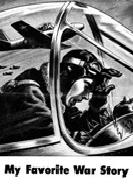
My Favorite War Story Veteran war correspondent Moscrip Miller was on his way back from China when he heard his favorite story of the war. Lt. Col. Edward D. McComas, an old-time Chennault ace at 26 and commanding officer of the Black Lightning Squadron, was talking with pride of "his boys." Here is the story of the 118th Tactical Recon Squadron of the 23rd Fighter Group, published in the May 29, 1945 issue of LOOK magazine and shared by Terrence Schwartz. 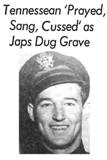
Tennessean Prayed, Sang, Cussed as Japs Dug Grave Brief story from the January 14, 1946 edition of The Nashville Tennessean about pilot James M. Taylor of the 75th Fighter Squadron, 14th Air Force. Downed by engine failure on November 11, 1944, he spent 10 months as a prisoner of the Japanese. The story continues in The Diddled Dozen. 
The Diddled Dozen Lt. James M. Taylor's own account of the mission in which he was forced to bail-out when his engine failed during a dog-fight with Japanese fighters over Hengyang, China. He was captured by the Japanese and was a Prisoner of War for ten months, one of twelve POW's that called themselves "The Diddled Dozen." 
Super-Fort In 1944 plans were finalized for basing B-29 Superfortresses in India and China for raids on the Japanese homeland. The "Super-Forts" made the first attacks on Japan since the Doolittle raid of 1942. They also supported operations in China and Burma. To keep their men informed, the XX Bomber Command published the bi-weekly newspaper Super-Fort. Recreated here are two issues of the newspaper, shared by Earl and Diana (Duty) Ingram. There is also a complete scan of a third issue. 
Wings Over China From the September 8, 1941 issue of LIFE comes this story by Clare Boothe. "An imaginary dialog wherein a distinguished American playwright (Boothe) looks down on the land and draws some wise conclusions." An informative look at China prior to World War II. 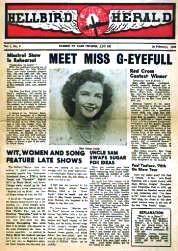
Hellbird Herald The 462nd Bombardment Group was activated on July 1, 1943 and was soon training on the new B-29 bomber. Early in 1944 they headed to Piardoba, India and later took part in the first raids on the Japanese homeland since the Doolittle raid of 1942. They called themselves the Hellbirds. This page contains a recreation of their newspaper, the Hellbird Herald, an above average unit newspaper from CBI. The original newspaper was brought home by B-29 Crew Chief, S/Sgt. Edwin O. Duty and shared by Earl and Diana (Duty) Ingram. 
The Flight of No Return Over four hundred and fifty planes took the Flight of No Return attempting to cross the Himalayas to China. Their wreckage, strewn across the Hump Route, formed what ominously came to be known as "The Aluminum Trail." This poem by Sunny Young pays tribute to the brave men who set out Over the Hump to China and never made it. From the book, The Aluminum Trail by Chick Marrs Quinn. 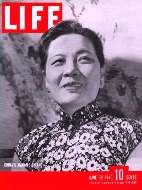
China: To The Mountains Madame Chiang Kai-shek graced the cover of the June 30, 1941 issue of LIFE and inside, publisher Henry R. Luce writes about his trip to the mountains of China to visit the Yellow River front. Photographs by Clare Boothe Luce. 
Bob Fagelson's Images of India Calcutta, Kanchrapara and Barrackpore are some of the places shown in these photographs brought back by CBI Veteran Bob Fagelson. They include street scenes, people and some Army installations in India, photographed in 1945 and 1946. 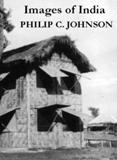
Philip Johnson's Images of India More photographs from World War II India. These were taken by 1st Lt. Philip C. Johnson, Armaments Officer with the India-China Division, Air Transport Command, stationed at the 1330th Army Air Force Base Unit in Jorhat. 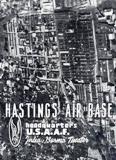
Hastings Air Base - A Pictorial Report Hastings Air Base, also known as "Hastings Mills," was Headquarters for the U.S. Army Air Forces in the India-Burma Theater. As operations wound down in December of 1945, this pictorial history of the base and its operations was made as a memento for those who served there. 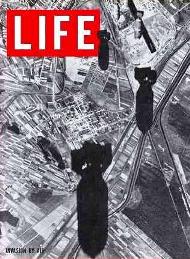
Airborne Raiders in Burma A pictorial of Colonel Philip Cochran's U.S. air force and the mixed force of Englishmen, Americans, West Africans and Gurkhas they landed in the jungle behind Japanese lines in Burma. There they harassed the Japanese and helped Lt. Gen. Joseph Stilwell's forces in their drive to reopen the land route to China. American light-plane pilots and their supply and evacuation missions are highlighted. LIFE photographs by William Vandivert. Also included is a background story on the June 12th issue, of which there were two versions due to the big news from Europe: Invasion! 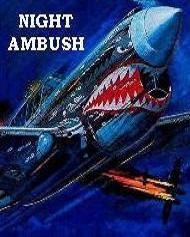
One-Man Air Force - Night Ambush Flying in pitch blackness in a fighter not equipped for night fighting (except for a flashlight to see the instruments) Major John R. Alison ambushed a flight of Japanese "Sallys" on a bombing run over Hengyang, China. From the May 1964 issue of Man's Magazine comes this story of a CBI legend written by Glenn Infield and shared by Terry Schwartz. 
The Best of CBIVA Sound-off Dave Dale was editor of the China-Burma-India Veterans Association newsletter, CBIVA Sound-off, from 1981 until the CBIVA was dissolved in 2005. In addition to news of CBIVA Bashas around the country, over the years he also published an expansive history of CBI written by Lt. Col. Joseph Shupe (USA Ret.). Those stories, as well as others from CBI veterans, have been compiled into a memorial edition of the best of CBIVA Sound-off. Presented in PDF document format in eleven sections created by David Hanneke (Dave Dale's grandson). 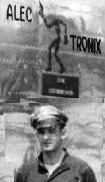
Charles Beard's Story - Radar Counter Measures in the CBI Theater Radar came of age during the Second World War and the U.S. took full advantage of the British development, sending teams to study and further develop it. CBI Veteran Roger Cook tells the little-known story of fellow Tampa Bay Basha member Charles Beard and Radar Counter Measures in the CBI Theater. 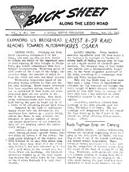
Buck Sheet - Along The Ledo Road A two page single-sheet newsletter produced by Special Services for men along the Ledo Road. This one is from March 15, 1945, and contains war news from CBI and other theaters. Another way soldiers in CBI stayed informed about progress of the war. Shared by CBI Veteran Tony Bushur. 
SEAC SOUVENIR The Services' Newspaper of South East Asia Command published by SEAC in Kandy, Ceylon (although printed in India). The paper features a definite British perspective. This issue features a year-end historical review of the Burma Campaign of 1944. Original issue shared by Roger Cook, Past Commander, Tampa Bay Basha, CBIVA. 
Air Commandos The place was Burma - some 200 miles behind the Japanese lines. The time - April, 1944. And the operation was a repeat - the second successful skyborne invasion of this territory within two months. In each case the pattern had been the same: spot open spaces from the air, send in glider-borne engineers and equipment to hack an airstrip from the brush, and within a matter of hours, fly in troops to harass the enemy and his lines of communication. A 1944 U.S. Army "Newsmap" pictorial of the Air Commandos and the aerial invasion of Burma. Shared by Charles Peterson. 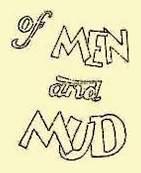
of Men and Mud "This is a story of men and mud, a story of a battalion of Aviation Engineers, activated, trained and shipped across half a world to become a part of the Allied striking forces which reversed the Japanese in their conquest westward to India, turned their greedy fingers from Burma and opened the lifeline to China." An unofficial history of the 879th Engineer Aviation Battalion "as told by its members." Shared by Charles Peterson. 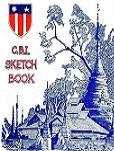
CBI Sketch Book John T. Fitzgerald embarked from the east coast for India in December of 1943 and returned to the U.S. in October of 1945. While in CBI with an Engineering Battalion (possibly the 879th EAB) he sketched just about everything he saw. After his return he compiled his drawings into this CBI Sketch Book, shared by Charles Peterson. 
First Convoy Over the Ledo Road - The Story of Pick's Pike Although the title indicates this is a story of the first convoy over the Ledo Road, it is not. Instead, this is an informational handout prepared by the Public Relations Office of Advance Section 3, apparently to be distributed to correspondents and others on the occasion of the first convoy to China. It contains biographical information on some of the commanders as well as a brief history of the road building project with facts and figures. Recreated from the original shared by Charles Peterson. 
Broad Views Prior to his Army service in World War II, Kin Platt had been a writer for many famous entertainers and publications. During the war, he served from 1943-1946 with the Air Transport Command of the United States Army Air Force. While stationed in India with the India-China Division of ATC he used his drawing talent to create a popular series of cartoons called "Broad Views." These cartoons appeared in the weekly newspaper, Hump Express, published by ICD's Public Relations section. Featured on this page are 25 "Broad Views." 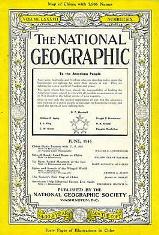
Stilwell Road - Land Route to China Nelson Grant Tayman was a Bridge Engineer attached to the Theater Branch, War Plans Division, Office of the Chief of Engineers, U.S. Army. He spent three months in Burma and China, determining the type and location of major bridges on both the Ledo and Burma Roads. He recounted his time on the "Land Route to China" for the June 1945 issue of The National Geographic magazine. 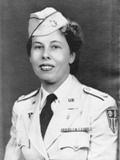
In Her Own Words A tribute to Louise R. Camden, a major in the U.S. Army Nurse Corps who served as Chief Nurse of the 69th General Hospital at Margherita (near Ledo) in the CBI Theater. Her letters home create a timeline and tell of her years of service in the Army - In Her Own Words. The letters were compiled and shared by her nephew, Rick Camden. 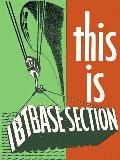
This Is IBT Base Section The Public Relations Section, along with the Information and Education Division, prepared this pictorial history of India-Burma Theater Base Section. "We can take a good look at what we have done and be justifiably proud. We were a team and no matter where we might have been located, or what cog in the machine that we might have been, we did our part." Take a good look for yourself at the complete original book. 
U.S. Army Pipelines in India Veteran Kenneth C. Anderson, a captain with the 777th Engineer Petroleum Distribution Company in CBI, wrote this comprehensive story of the "Not so glamorous Corps of Engineers" and the India portion of the pipeline that ran from the Calcutta docks to the airfields of China. Also included is Kenneth's personal story of his Army service, "A Unique Military Experience." 
Chinese Army in India-Burma Campaign A unique pictorial history of the Chinese Army in the India-Burma Campaign, told from a Chinese perspective. Adapted from a rare 1947 Chinese/English book which has been donated to the Stilwell Museum in Chongqing by Charles Peterson. 
Aerial Views of the Ledo Road The road trace was through to Shingbwiyang by the end of 1943 but construction was still in progress all along the way. Fly along in a liaison plane as an Army photographer takes these "SECRET" shots to document places along the road from Ledo to Shingbwiyang. Over thirty rare photographs shared by Hal Baker. 
Stilwell Road Certificate A souvenir certificate intended for "all individuals who have traveled over the Stilwell Road, including Cowboys, Cockpit-drivers, Six-by-Six Gear Strippers, Jeep Skippers and even mere Space Occupiers." Features great caricatures and map of the road by Melvin Shaw. 
Dear Mom Two letters written by Andrew (full identity unknown), a soldier at Ledo, to his Mom and Pop and family back home. In his first letter he tells of the journey from Calcutta to Ledo, and how nice they have it at camp (Based on the date of his arrival, he is a replacement). In the second letter the theme is mostly when he thinks he'll be home. He laments that he has only 22 points as other soldiers go home. A look at what seem to be a typical letters home, written by a U.S. soldier. 
Newsmap for the Armed Forces When America entered World War II, the U.S. Army Information Branch developed poster-size Newsmaps, which, as the name suggests, were part newspaper and part map. Each Newsmap contained stories from Europe, Asia and Africa and illustrated the latest moves of the Allied forces. Throughout the war, Newsmaps were produced weekly and posted in every American military installation around the world. Here, from the December 4, 1944 edition, news from Burma and China, and a map of North Burma. Shared by Hal Baker. 
Inside Wartime China Published by the Chinese Ministry of Information in Chungking, December 1, 1943, this book extols the virtues of China, its people and soldiers. Most definitely a government propaganda book intended for China's allies in the war against Japan. That's an armed "Miss Free China" on the cover. Here the original book has been completely recreated for the Internet. Shared by Hal Baker. 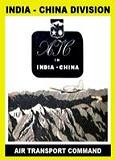
ATC in India-China This 1945 booklet produced by the Graphic Information Section of the India-China Division (ICD) of the Air Transport Command (ATC) tells the story of ICD in the CBI Theater. Shared by Jyotirmay Bareria. 
Round Robin Go aboard the S. S. Marine Robin and read the ship's newsletter from November 28, 1945, as it steams from Calcutta to Seattle with 2,572 homeward-bound China and India-Burma Theater veterans. The Round Robin newsletter kept the ship's passengers informed of events onboard and provided some world news as well. This was the last newsletter of the voyage as the ship reached port on December 1. Original shared by Paul Shindelar. 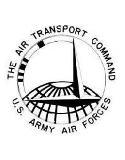
The Air Transport Command Original pages of a United States Army Air Force booklet prepared for the general information and interest of Air Transport Command personnel in 1943. Original shared by Hal Baker. 
My Trip Over The Ledo Road "This is the story from day to day on probably the most exciting trip of my life." A first-hand account of the first ATC convoy over the recently completed Ledo Road to China in 1945. Unable to send letters home while enroute, William Dawson wrote this day-by-day diary of his experiences in the form of a letter home in a book he kept with him, and later sent home from China. Shared by his daughter, Carol Hoffner. 
Chungking - China's War Capital The Chinese Ministry of Information published this booklet, part of a series of 24 about wartime China. The booklet provides details about the city of Chungking, which served as the capital of China during the war. An interesting look at the wartime city. The complete booklet is shown. Shared by Hal Baker. 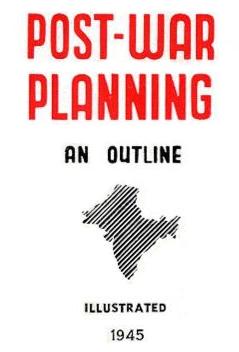
Post-War Planning This booklet, produced by the Government of India, Bureau of Public Information, details the plans for post-war India. The complete booklet is shown. Shared by Hal Baker. 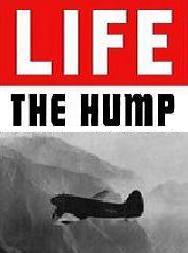
The Hump From the September 11, 1944 issue of LIFE comes this pictorial story of the famous Himalayan airlift route by Theodore White. Includes color aerial photographs by William Vandivert. 
Bull-Dozer An example of one of the many Soldier-written newsletters that kept the men of specific outfits informed of news of the war and their unit. This one was produced by men of the 330th Engineer Battalion, who worked along the Ledo Road. Shared by Hal Baker. 
The Hairy Ears Herald According to a Ledo Road pictorial in LIFE, "The Engineers have hairy ears and live in caves and ditches. They bang their jocks against the rocks, those hardy sons of bitches." That's just one of the less bawdy verses. The Engineers were known as HAIRY EARS and the newsletter of the 823rd Engineer Aviation Battalion in CBI was appropriately named: The Hairy Ears Herald. Two examples shared by Hal Baker. 
Camelcade An interesting look at the menu from the Red Cross "Camelcade" Enlisted Men's Club in Karachi, India. Shared by Glenda Garrelts Mattes, daughter of Glenn Garrelts of the 181st General Hospital, Karachi. 
Welcome to Bombay An informational booklet prepared by the Hospitality Committee in Bombay for soldiers newly-arrived in the China-Burma-India Theater. Shared by the family of CBI Veteran John Sunne. 
Glenn Garrelts' India The CBI photo collection of Glenn Garrelts of the 181st General Hospital, Karachi. A typical look at life in World War II India as seen through the lens of a visiting American's camera. Over 100 photos of Calcutta and Karachi. Shared by Glenn's daughter, Glenda Garrelts Mattes. 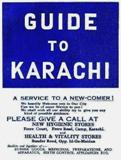
Guide to Karachi A locally produced informational booklet for soldiers in Karachi, India. Shared by Glenda Garrelts Mattes, daughter of Glenn Garrelts of the 181st General Hospital, Karachi. 
Burma - A Miracle in Military Achievement To conquer Burma without a port, or road, or railway worthy of the name, and with only six months of the year favorable for operations, was the problem which faced Lord Mountbatten when he took over Southeast Asia Command in November, 1943. How he did it is briefly told in this wartime booklet about the Burma campaign from SEAC, newspaper of the Southeast Asia Command. Shared by Jyotirmay Bareria. 
The Forgotten War Frank Vierling, veteran of the 130th AACS (Army Airways Communications System), shares over 100 photos of China and tells the story of his Army service in "The Forgotten War" in CBI. Adapted from an original presentation created by Frank. 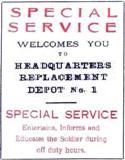
Special Service Booklet CBI soldiers arriving at Replacement Depot No. 1 at North Malir, some 15 miles from Karachi, received this booklet to familiarize themselves with the Depot and the Karachi area as they awaited shipment back to the States. The booklet brought back by T/5 Kenneth W. Clark was shared by his son John Clark. Also included is Kenneth Clark's CBI story. 
Walter Orey - Memoir of World War II Walter Orey served as a member of the 1891st Engineer Aviation Battalion in CBI. Before becoming an engineer, Walter trained as an Aviation Cadet. In the spring of 1944 the test requirements were raised, washing out about 70% of the Aviation Cadet candidates in the squadron, including Walter. Read why and more in this memoir of World War II. John Clark, whose father served with Walter in CBI, shared the story. 
Route Guide - Kunming to Kweiyang Prepared by Highway Division, Engineer Section, Hq. S.O.S., China Theater and dated 12 January 1945, this five page guide shows a rough map and written directions from Kunming to Kweiyang, China. A close look shows that the guide may have been used by a CBI soldier enroute from Kunming to the Hsing-jen, An-lung, Poseh area as this route is highlighted in red. The original guide as scanned and shared by Graham Thompson is shown. 
Somewhere In India A stack of unanswered letters from home over two-and-a-half feet high from "no fewer than 56 people prompted this "form letter" home from an Air Corps sergeant in the CBI Theater. CBI life from a veteran of over two years in India is detailed. The original letter is shared by Graham Thompson. 
History of IBT Engineer Section An official history of the India-Burma Theater Construction Service and Engineer Section prepared just after the war's end. Construction projects such as the Stilwell Road and the pipelines to China are summarized. Includes original maps and diagrams of engineer activities in the CBI Theater. Shared by Graham Thompson. 
Route of the Ledo Road A description of the route of the Ledo Road from the Historical Record of the Engineer Section - Construction Service - Services of Supply in CBI and IBT. Ride along over the Patkais, through the Hukawng and Mogaung Valleys, and on to Wanting and the junction with the old Burma Road. Shared by Graham Thompson. 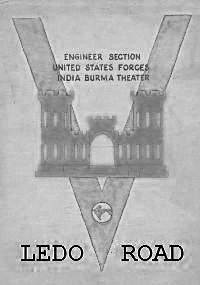
History of the Ledo Road 1942-1944 From the Historical Record of the Engineer Section - Construction Service - Services of Supply in CBI and IBT comes this detailed history of road building efforts from the start in March 1942 through August 1944. Shared by Graham Thompson. 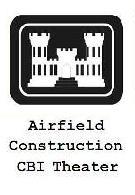
Airfield Construction 1942-1944 From the Historical Record of the Engineer Section - Construction Service - Services of Supply in CBI and IBT comes this information about airfield construction 1942-44. Shared by Graham Thompson. 
New York to China on the World's Biggest Airline As the war progressed, the U.S. Army Air Force Air Transport Command grew into the world's biggest airline. Its routes circled the globe bringing planes, passengers and cargo to the war fronts. On this page is the story of the air transport operation that supplied U.S. and Chinese troops in the CBI Theater. A pictorial from the September 4, 1945 issue of LOOK magazine. Shared by Gregg Millet. 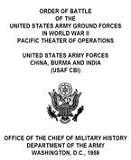
CBI Order of Battle Prepared by the U.S. Army Office of the Chief of Military History in 1959, this history of CBI details names, dates, and locations of major commands. One of the more interesting facts included is that "CBI" was initially "ICB" (American Army Forces, India, China and Burma). Shared by CBI Historian Gary Goldblatt, whose web site www.cbi-history.com has more details including individual unit lineages and history. 
CBI Roundup and Post-war Memorandum The newest addition to the recreated CBI Roundups on the Internet is the January 11, 1945 issue which was also included as an annex to a post-war memorandum regarding control of and content in Roundup. The memorandum appears to be a lesson from the Command and General Staff School at Fort Leavenworth, Kansas. It is dated after the war was over and after Roundup had ceased publication. See the Memorandum and the January 11, 1945 issue included as an annex. 
The Mars Task Force A soldier-written poem about the "Men of Mars." The original poem, hand-written on five pages and found between the pages of the book "The Marauders," was written by Pfc. Wade D. Hall of the 475th Infantry, a unit of the Mars Task Force. Beautifully written, it has been transcribed for easier reading or printing. The original hand-written pages can also be viewed. Shared by Kathryn Thomason Cleveland. 
Serendipity Like many CBI soldier's sons and daughters, John Clark knew very little about his father's service in World War II in the CBI Theater. While searching for information, John made a truly unexpected and fortunate discovery, one that would forever tie two CBI veterans. Story by John Clark. 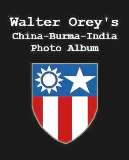
Walter Orey's CBI Photo Album Follow Walter Orey's journey in photos from training at Geiger Field, Washington to India, Burma, and China and back as a member of the 1891st Engineer Aviation Battalion. You can also read the story in Walter's Memoir of World War II. Photos scanned and shared by John Clark. SOS First Anniversary Report This booklet reviews progress of the Services of Supply Construction Service as of 1945. The original booklet is shown along with links to related maps of progress of the Ledo Road and Pipelines. Brought back from CBI by Major Cecil A. Hurt of the U.S. Army Corps of Engineers and a member of Lord Mountbatten's staff in 1944 and 1945. Shared by his grandson Maury Hurt. Shweli River Bridge Construction Major Cecil A. Hurt of the U.S. Army Corps of Engineers took these photographs of construction progress on the 450 foot Shweli River Bridge. Shared by his grandson Maury Hurt. 
Lt. Lawrence H. Tompkins' Photos In memory of Lt. Lawrence H. Tompkins who flew The Hump with the 1st Combat Cargo Group. This page features photos of him and the C-47's he flew over CBI. Shared by Larry Bowers. 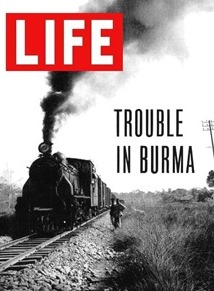
Trouble In Burma The pictorial story from the April 24, 1944 issue of LIFE featuring the Bengal & Assam Railway and the Allied supply problems in the CBI Theater. Also told is the story of the Japanese offensive into India at Imphal and Kohima to cut the Allied supply line. 
Burma Road - Japan Threatens to Close China's Only Supply Line China's only link to the outside world for supplies was the Burma Road. Japan's invasion of Burma threatened to cut this supply line as documented in this pictorial story from LIFE. The story states "The remote Burma Road could well be the fuse that would set off the great Pacific war" and ironically this issue's publication date was December 8, 1941, one day after the actual fuse blew at Pearl Harbor. 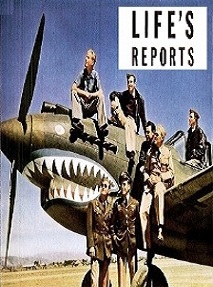
The A.V.G Ends Its Famous Career The American Volunteer Group (A.V.G.) held the line against the Japanese in the air for six months before becoming part of the U.S. Army Air Force. This is their story from the July 20, 1942 issue of LIFE. 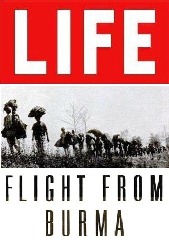
Flight From Burma The story and pictures from the June 8, 1942 issue of LIFE telling of the refugees' plight as they fled to India from the Japanese invading Burma in early 1942. 
"Dear Mom, I Got A Valet" This story was written by an unidentified Staff Writer for C.B.I. Roundup at the request of LIFE magazine. American soldiers adapt to the Indian bearer system. Indian bearers adapt to the "rich" American soldiers. 
Chiang Kai-shek A LIFE Close-up of China's Generalissimo Chiang Kai-shek from the March 2, 1942 issue. The leader of free China was also Supreme Commander of Allied forces in the CBI Theater. The story is an in-depth look at one of the top four Allied leaders of World War II (the others being Roosevelt, Churchill, and Stalin). 
War Explodes Into Bombay What came to be known as the Bombay Docks Explosion occurred on April 14, 1944, at the Victoria Dock of Bombay. The freighter SS Fort Stikine, carrying a cargo of cotton bales, gold, and ammunition including around 1,400 tons of explosives, caught fire. The fire led to two giant explosions which destroyed the Fort Stikine and sunk many surrounding ships. Hundreds died and thousands were injured. LIFE photographers captured the aftermath. 
Chinese Pilots A story about the training of Chinese pilots at Thunderbird Field in the United States from the May 4, 1942 issue of LIFE. 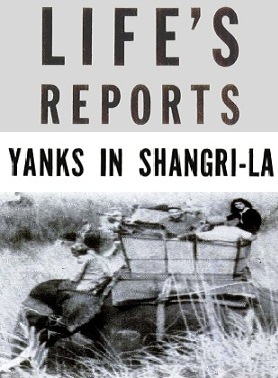
Yanks In Shangri-La LIFE Reports on U.S. Army Tenth Air Force repair depot personnel in India and the Maharaja who befriended them. 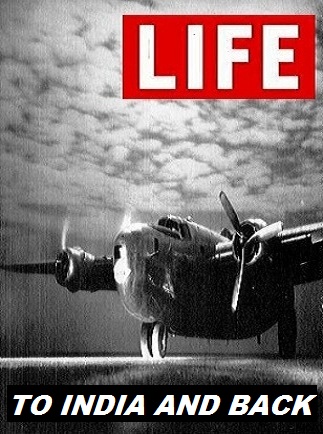
To India And Back In 10 Days LIFE photographer Tom McAvoy documents the longest supply line of the war, often called "12,000 Miles From Main Street," by traveling the Air Transport Command airlift route from Miami to Chabua, India. The June 5, 1944 issue's cover features U.S. infantry, ready for invasion. The publication date interestingly enough is D-Day minus 1. 
B-29 Superforts Bomb Japanese Mainland A new bomber was big news and many news agencies, including LIFE, covered one of its first missions: bombing the Japanese homeland from bases in China. The 20th Bomber Command was formed to carry-out the missions from China with bombs, fuel and other supplies flown over The Hump from India. This pictorial is part of "Our War Against Japan" from the July 10, 1944 issue of LIFE. 
Peace Comes to Shanghai LIFE's Theodore H. White reports on the situation in Shanghai following the Japanese surrender. 
Jinx Returns From The War Jinx Falkenburg was one of the highest-paid and most popular cover-girl models in the United States during the war. She is regarded as one of the first "supermodels." LIFE photographs tell the story of her very successful visit to CBI as part of a USO tour. 
China Fights On Thought by many, as the article states, to be "on the ropes," Chinese troops stop a Japanese offensive and win a victory on the Salween River front. 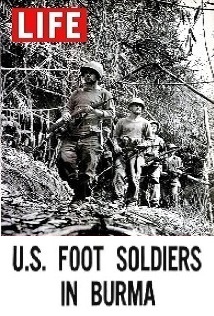
U.S. Foot Soldiers In Burma They had already become known as "Merrill's Marauders" and had just taken the Myitkyina airfield when this pictorial appeared in the June 26, 1944 issue of LIFE. Graphic photos tell the story and include a visit from General Stilwell and the work of Dr. Gordon Seagrave. 
The Mules of Myitkyina LIFE Reports on the four-legged members of Merrill's Marauders - Army mules from the U.S. who helped carry the fight to the Japanese in Burma. 
Claire Chennault Story and drawings from "Three Airmen" in the May 29, 1944 issue of LIFE about U.S. General Claire Chennault. 
Man And His Dog General Stilwell rests at home after his recall from China and is shown on the beach at Carmel, California with his dog Gary. This article from LIFE also includes his family and Chinese art by his daughter Alison. 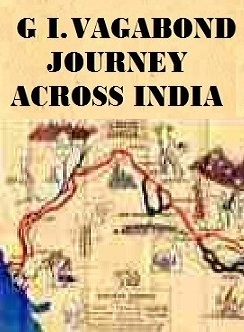
G.I. Vagabond Journey Across India A fanciful map from the CBI Theater showing railway routes from Karachi and Calcutta to Ledo. Six-and-a-half days to go 2407 miles from Karachi to Ledo. 
The Story of "The Hump" "The world's most dangerous overland air route" was featured in this advertisement from the June 5, 1944 issue of LIFE magazine by the Consolidated Vultee Aircraft Corporation. After reading it you might think that only the Liberator Express (C-87) flew The Hump. Of course that wasn't the case but no need for details when you're promoting your own aircraft now and for in the future. The C-87, by the way, was the cargo version of the B-24 Liberator bomber and was developed because of the need for a heavier lift capacity quick replacement for the C-47. 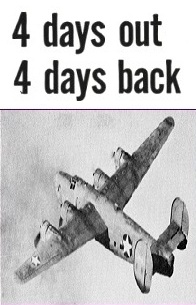
4 Days Out - 4 Days Back Another advertisement from the Consolidated Vultee Aircraft Corporation. This one tells the story of the 4 day, 14,000-mile supply run between India and Ohio. 
The Rambler Roars into Rangoon This advertisement from the Army Air Force Recruiting Service, takes you on a mission with the crew of the B-24 "Rangoon Rambler." Specifically intended for "men of 17," it urges them to sign-up now for service after high school. 
The U.S. In China An editorial from the November 13, 1944 issue of LIFE about the removal of General Stilwell and the complex problems of U.S./Chinese relations. 
China Flees A Japanese push in Kwansi province resulted in the loss of U.S. airbases in the area and the necessity for the Chinese people to flee the advancing Japanese. From the November 20, 1944 issue of LIFE. 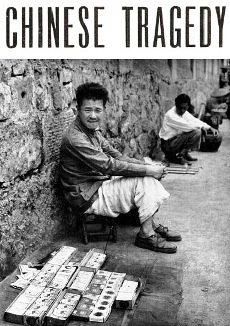
Chinese Tragedy A pictorial report on the inflation and resulting black market in China during the war. 
Victorious China Military action by Japan against China began in 1931 and by 1937 full-scale war had broken out. Many historians trace the beginnings of World War II to this conflict. In this pictorial from the August 27, 1945 edition of LIFE, China celebrates victory over Japan and looks to the uneasy peace it brings. 
A Big Day In China LIFE reports on the United Nations Day celebration in China in its October 25, 1943 issue. Festivities in Chungking honor the four great powers: the U.S., Great Britain, Russia and China. Included is a link to an earlier story about the bombing of Chungking in the August 12, 1940 issue. 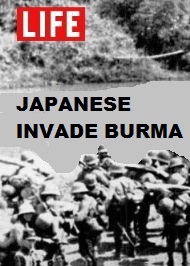
Lightly Armed Japanese Filter Up Through Burma A story and pictures of the February 1942 Japanese invasion of Burma. 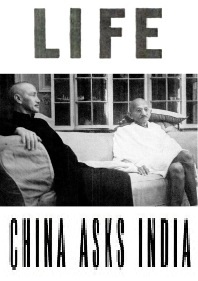
China Asks India Whether It Will Fight Generalissimo and Madame Chiang Kai-shek traveled to Calcutta to meet with India's leaders Mohandas Gandhi and Jawaharlal Nehru to discuss India's participation in the war against Japan. 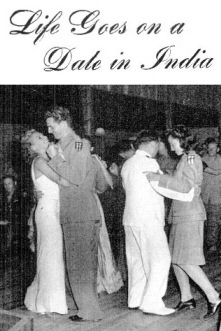
LIFE Goes on a Date in India Photographer William Vandivert recorded this pictorial of a U.S. officer on a "date" while on leave. The officer's date was with a British girl doing censorship work in Bombay and working as a hostess at the Srinagar club. Together they escaped the war for a while in beautiful Kashmir. 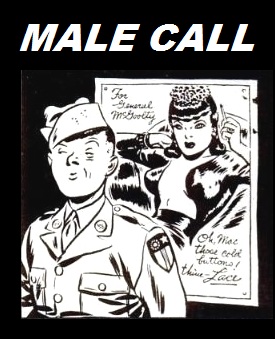
Miss Lace is GIs' Heroine From "Speaking of Pictures" in the June 4, 1945 issue of LIFE comes this pictorial of Milton Caniff's Miss Lace, star of the comic strip Male Call. This series of comic strips was drawn specifically for the Camp Newspaper Service by Caniff as a free service to GIs. It featured CBI GIs somewhere in China. (Check out the shoulder sleeve insignia on the GI at left). Eight of the Male Call comic strips are featured. 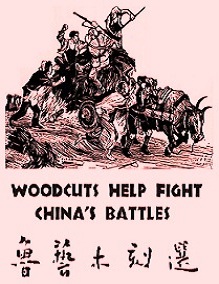
Woodcuts Help Fight China's Battles This LIFE article explains the ancient oriental art of woodcuts and their use as propaganda by the Chinese during the war. 
U.S. Snubs China's Army Mission The enemy is not the only thing presenting problems during war. Dealing with allies can also present issues of a different sort. Read how this applied to the U.S., China and Russia during World War II. 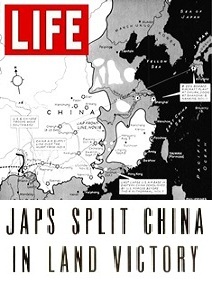
Japs Split China in Great Land Victory A Japanese drive late in 1944 cut a path between Chinese forces and isolated forward U.S. air bases, forcing their destruction and abandonment. This short story from the November 27, 1944 issue of LIFE includes a situation map. 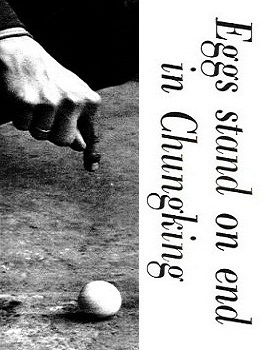
Eggs stand on end in Chungking A silly story examining the phenomenon of eggs standing on end during the change of season's from winter to spring. As the story states, after eight years of war it was probably a needed diversion for the Chinese wartime capital. 
"Bottoms Up" in China A soldier story about the Chinese custom of toasting called kan pei. The toast is made with a potent rice wine known as jing pao, which literally translates to "air raid alert." Soldiers also called it air raid alert and the nuances of avoiding drinking too much are discussed in this article. 
Brereton General Lewis H. Brereton spent only a few months in CBI. After forming what would become the 10th U.S. Air Force, organizing the 12,000 mile supply line from the United States and shortly after this article appeared in LIFE, General Brereton was transferred to North Africa along with the best bomber aircraft and crews then in India, in response to the German threat to the Suez Canal. 
China Bowl Football Classic November 1945. The war is over but Army and Navy personnel are still in the CBI Theater "cleaning up." What better way to spend your free time than playing football? What better way to play football than Army vs. Navy? Here's a story and program from the Army-Navy "China Bowl Football Classic" of December 1, 1945. Shared by Bruce Uhler, son of Army running back Lt. Earl Uhler. 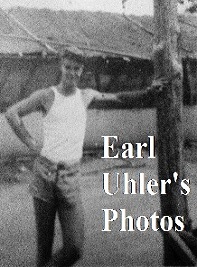
Earl Uhler's Photos A handful of photo memories from Lt. Earl D. Uhler, Jr., who flew C-46 transports in CBI. Shared by his son Bruce. 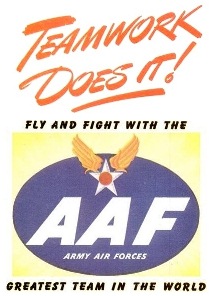
Teamwork Does It! "Fly and Fight with the Greatest Team in the World" urges this U.S. Army Recruiting Service advertisement from the September 4, 1944 issue of LIFE magazine. It portrays an air attack against a Japanese convoy on the Burma Road and the Army Air Forces team that makes it happen. 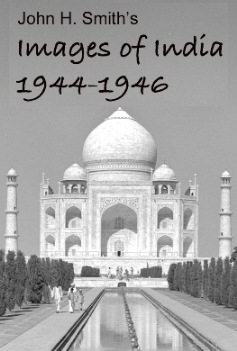
John H. Smith's Images of India 1944-1946 John H. Smith, Jr. served with the 164th Signal Photographic Company in CBI from 1944 to 1946. His responsibilities included taking and printing identification photographs, assisting motion picture cameraman in public relations work, developing film of all types and making prints in the photo lab. John returned from India with many photographs, negatives, and slides from which the more than 180 images on this page are taken. Also included is a list of members of the 164th Signal Photo Company. 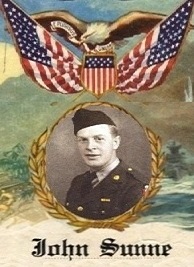
John Sunne Photograph Collection The family of John Sunne shared his memorabilia and photo memories of India. Many of the photos are not captioned but are still an interesting look at G.I. life in India in the CBI Theater. 
Jack Knight - Medal of Honor The only Medal of Honor earned by a member of U.S. Army ground forces in the China-Burma-India Theater was posthumously awarded to 1st Lt. Jack L. Knight of the 124th Cavalry, Mars Task Force, for gallantry in action in Burma. He was killed in action leading his troop in an assault on a strategic hill near Loi-kang, on the Burma Road. Lord Mountbatten ordered the hill be named "Knight's Hill" on official theater maps and the assault became known as "The Battle of Knight's Hill." Related: Knight Hill is Taken. 
CBI Manhunt - The Story of Pvt. Herman Perry His fellow soldiers called him the "Jungle King" because of his survival and evasion skills. To the Army he was an escaped convict under sentence of death for shooting an officer. He escaped before his sentence could be carried out and led authorities on what has been called "The Greatest Manhunt of World War II." He was Pvt. Herman Perry and he was the only soldier executed by the U.S. Army in the CBI Theater. This page tells the story and links to the book "Now The Hell Will Start," which is a detailed account of the manhunt. 
Along the Burma Road with Milford Zornes James Milford Zornes was assigned as an artist/correspondent to the CBI Theater during World War II. This page contains photographs presumably taken by him while journeying over the Burma Road. The photographs are all from the Salween River area of China. Included are some drawings done by Zorne while in the Army. Photos shared by Hal Baker. 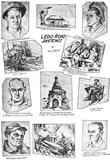
Ledo Road Sketches by Milford Zornes This full page of sketches by Milford Zornes appeared in the June 1, 1944 issue of the CBI Theater newspaper Roundup. They are views of men and places along the Ledo Road. 
Tiger Rag This newspaper was published by and for the men of the 5317th Air Depot Headquarters and other units in the Calcutta area, collectively known as the Bengal Air Depot. It is frequently incorrectly associated with the famed "Flying Tigers" rather than the Bengal tiger from which the name comes. Tiger Rag was judged by Roundup as one of the best papers in the Theater during a GI newspaper competition. 
New Year - Old Friend A single photo shared by Pedro Chan celebrates the new year with an iconic old friend. 
A Tribute to Arthur Paul Lancy Chief Warrant Officer Arthur Paul Lancy's 28-year Air Force career included eight months in the CBI Theater. CWO Lancy was an administrative inspector and courier assigned to the 1311 AAF Base Unit at Gaya, India with the India-China Division of the Air Transport Command. This tribute includes photos and memorabilia from CBI, shared by his son, T. M. Lancy, MSgt, USAF/Ret. 
Frank Amenitsch CBI Photo Album Franz Joseph (Frank) Amenitsch photographed the people, places and things he saw during his years of service with the U.S. Army Corps. of Engineers in the China-Burma India Theater. The almost 500 photos form a virtual tour of CBI and are presented here courtesy of his son Robert. 
ARC Light "A publication by the American Red Cross of the China-Burma-India Command." The primary audience was Amcross (American Red Cross) workers in the CBI Theater and this newspaper gives some insight into their time and efforts supporting U.S. troops. 
Inside Red China This article tells of the other China, that of Mao Tse-tung and the Communist Party, its struggles against the Japanese and efforts to establish communism in North China. From the December 18, 1944 issue of LIFE. 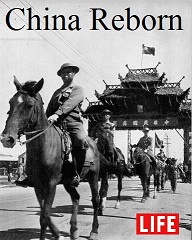
China Reborn "The lost provinces spring to life as Chungking exiles trek back to their homes and Nationalist armies check the Communist" was the subtitle of this November 12, 1945 article by LIFE editor Charles J. V. Murphy. It describes the situation in various northern provinces as China attempts reconstruction following the war. 
Crisis in China From the December 17, 1945 issue of LIFE comes this post-war look at the crisis in China between the Kuomintang of Chiang Kai-shek and the Communists of Mao Tse-tung. 
Flashes from Burma Road Army war correspondent-artist Howard Baer was sent to the CBI Theater to record what he saw using his unique talent. This page features him and his paintings in an advertisement for Camel cigarettes from the April 16, 1945 issue of LIFE magazine. More of his work can be seen on the Paintings of Army Medicine page. 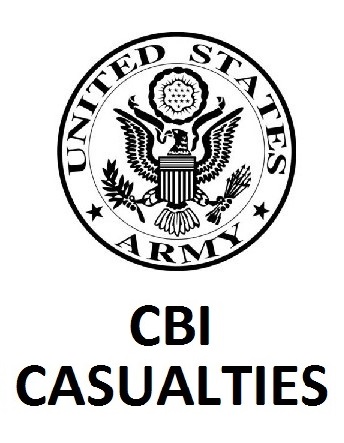
U.S. Casualties in CBI This page lists U.S. Army battle casualties defined as personnel lost through death, wounds, injury, internment or capture, or through being missing in action. Figures are shown for each country involved (China, Burma and India) as well as by Theater. The CBI Theater was split into the China Theater and India-Burma Theater as of 24 October 1944. 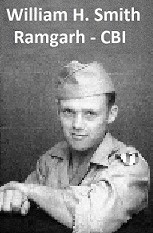
William H. Smith at Ramgarh Dale Smith shares his father's story of U.S. Army service in World War II at Ramgarh Training Center in India. William H. Smith served in the CBI Theater at Ramgarh attached to the 527th Ordnance Company (Heavy Maintenance). Over one hundred photos and background information from Dale help tell the story. 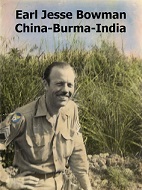
Earl Jesse Bowman Album T/4 Earl J. Bowman served in India as a member of the 886th Signal Company (Depot, Aviation). He found both the poverty and the architecture incredible and took almost 400 photos of what he saw. His photos of World War II India are presented here, courtesy of his step-daughter. 
Marilyn Monroe and YANK - The Army Weekly David Conover, a professional photographer working for the U.S. Army Air Corps First Motion Picture Unit, was sent to a munitions factory to shoot morale-boosting photographs of employees doing their part to help the war effort. His photos were intended for use in a future edition of YANK. There he met and photographed Norma Jean Dougherty, destined for fame as Marilyn Monroe. This page explores Conover's "discovery" and dispels some myths about photos of her in YANK. 
Famous Planes of the CBI Theater A compilation of stories, facts and photos of the famous planes that flew in the CBI Theater. Probably the most recognizable of these planes is the shark mouth P-40 Fighter of the Flying Tigers, who helped defend China in the months prior to direct U.S. involvement in World War II. 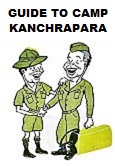
Guide to Camp Kanchrapara Guide book provided by Army Special Services at Camp Kanchrapara Replacement Depot No. 3 in India to soldiers passing through, most on their way home. Original booklet shared by Dr. Richard Riva. 
M.A.S.H. Stories A brief retrospective by Major H. L. Riva, MC, Surgeon, Commanding Officer of the 28th Portable Surgical Hospital in China, from formation of the unit through the surrender of Japan. The Portable Surgical Hospitals (PSH) of World War II were later known as Mobile Army Surgical Hospitals (MASH) during the Korean War. Today they are known as Combat Support Hospitals (CSH). 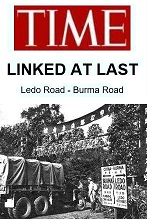
Linked At Last This short story by Theodore M. White from the February 5, 1945 issue of TIME tells of a journey with the first convoy over the newly completed (and named) Stilwell Road. The Ledo Road and the Burma Road - Linked at last. 
A Personal History of the 28th Portable Surgical Hospital Major H. L. "Rip" Riva and his wife Betty exchanged almost daily letters across the world during his 17 months overseas. In preparation for returning home, Maj. Riva, commanding officer of the 28th Portable Surgical Hospital, wrote this summary letter. It documents events starting onboard ship at the Hampton Roads Port of Embarkation and continues across the world to China just after the end of the war. Shared by Dr. Richard Riva who highlighted his father's letter with relevant images and information. 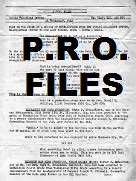
P.R.O. Files The Public Relations Office (PRO) of U.S. Army Forces in CBI published this first in a series of newsletters intended for CBI soldiers who might be interested in becoming part-time reporters. It encourages them to send stories to the PRO so that they can be sent to the U.S. to be published. This initial newsletter also provides example stories and recommends subject matter. The mission: To make the U.S.A. more "CBI-conscious." 
LIFE - India In Peril From the March 16, 1942 issue of LIFE comes this story of India in peril of Japanese invasion. The Japanese were stopped by the British at Imphal and Kohima. A brief look at India's long history of invasion and it's diverse people, with many illustrations. 
China's Soong LIFE Close-Up article about China's Soong Tse-ven, better known as T.V. Soong. An in depth look at the financial wizard, his family and their impact on China. From the March 24, 1941 issue of LIFE magazine. 
Polish Artist Sketches the War Seen on this page are sketches of India, Burma and China by Feliks Topolski, an official war artist for the Polish government. From the March 19, 1945 issue of LIFE. 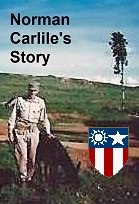
Norman Carlile's Story Major Norman A. H. Carlile guided various Chinese units during his service in CBI. His story is told in an excerpt from Regimental History of the 316th Infantry, Volume III. Photos help complete the story, shared by his son Jim. 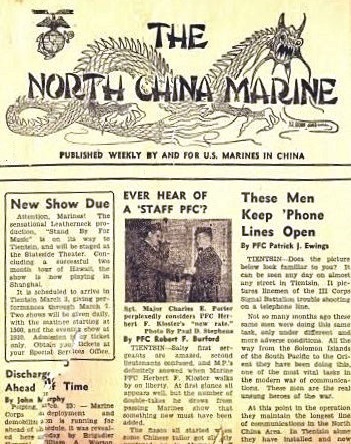
The North China Marine At the end of World War II, U.S. Marines, who had fought their way island by island across the Pacific, were tasked with repatriating Japanese military and civilian personnel from China back to Japan. The mission of the Third Amphibious Corps, deployed to Tientsin, China, lasted from September 1945 until June 1946. They published The North China Marine newspaper to keep them informed and entertained. The original newspapers, shared by Jeff Titchenal from his father's collection, have been re-created here for easier reading and searching. 
George Bauernfeind in CBI The 497th Engineer Heavy Shop Company was unique in that it was formed almost entirely from employees of the Caterpillar Tractor Co. of Peoria, Illinois. George Bauernfeind was one of those employees. This page includes his story and pictures from "Little Peoria" along the Ledo Road. Shared by his son Michael. 
A Pictorial Record of the 497th Engineer Heavy Shop Co. The Army had a need for experienced men to work on equipment that would be used on a massive road project. The result was formation of a unique Army unit composed almost entirely of employees of a single civilian company, the Caterpillar Tractor Co. of Peoria, Illinois. Following the training documented on these pages, the 497th would be sent to the CBI Theater to work along the Ledo Road. The pictorial record shown here was created as a souvenir by Caterpillar. 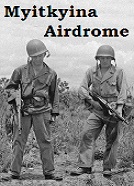
Capture of Myitkyina Airdrome These photographs by LIFE's Bernard Hoffman were taken just after the capture of the Myitkyina Airdrome (airfield). A handful of them were used in the June 26, 1944 issue of LIFE in an article about "U.S. Foot Soldiers in Burma." Most of the fighting had moved toward the town but there were still pockets of resistance scattered about the outskirts of the field. There are no captions but for the most part, none are needed. 
Merrill's Marauders More photographs by Bernard Hoffman from the LIFE Photo Collection at Google Arts & Culture. This time he's with Merrill's Marauders as they work they way through the Burma jungles. 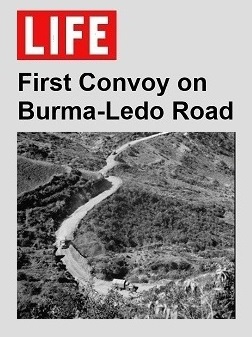
First Convoy on Burma-Ledo Road It didn't even have an official name yet, but after two-and-a-half years of construction, this first convoy over what would become Stilwell Road was big news. Correspondents from all the major news outlets were along to document the event, including LIFE photographer Jack Wilkes, who took the photos shown on the page. Some made it to the magazine in articles about the road and the war in China, Burma and India, and all are now part of the LIFE Photo Collection at Google Arts & Culture. 
More Ledo Road from LIFE Three hundred more photos of the Ledo Road from the LIFE Photo Collection. As with other photos from the collection, some made it to the magazine but most did not and have been sorted and grouped together here for the first time. 
General Joseph W. Stilwell Some portrait and candid photos of General Joseph W. Stilwell from the LIFE Photo Collection. 
History of the 69th Medical Depot Co. Transribed documents of the History of the 69th Medical Depot Company and also its Final Organization in 1945. The 69th served in India, Burma and China. Original documents are included. 
Sketches by William Warren Movie stars, local scenes and funny situations are some of the subjects of these sketches drawn by William Warren during his time in CBI with the 69th Medical Depot Company.  A Memoir of Julius Palmer Edwards' in World War II Written by Dr. David T. Fletcher (Julius’s grandson), in consultation with Bonnie J. Edwards (Julius’s first daughter), and reconstructed mainly from his oral recollections and World War II CBI Photo Album. 
The Hump (In Color) These photos by LIFE's William Vandivert were taken over The Hump route - the military airlift over the Himalaya mountains between India and China. Several hundred photos were taken, only a few being used in the September 11, 1944 pictorial in LIFE. Some of the photos used were in color. On this page are all the color photos taken by William Vandivert over The Hump. All are from the LIFE Photo Collection at Google Arts & Culture. 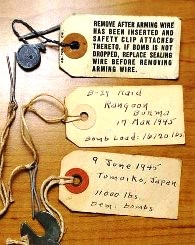
James Shephard - CBI Memorabilia The tag states: "Remove after arming wire has been inserted and safety clip attached thereto. If bomb is not dropped, replace sealing wire before removing arming wire." It doesn't say anything about saving the tag and writing mission deatils on it, but that's what James E. Shephard did. A unique look at the bomb tags he saved from some of the missions he flew in a B-29 out of China.  Seagrave Returns to Burma Jack Wilkes photographed the return of Dr. Gordon Seagrave to his hospital at Namkham, Burma. From the LIFE Photo Collection at Google Arts & Culture.  Adventure in Burma Told in drawings, this is the story of Dr. Gordon Seagrave and his hospital in Burma. Adapted from Seagrave's own book, Tales of a Waste-Basket Surgeon and from various news stories.  CBI Memorial at Arlington National Cemetery A tree and simple monument pay tribute to the men and women of the CBI Theater at Arlington National Cemetery. Visit TRACES OF WAR for more information or if you can provide information about the memorial's dedication date. 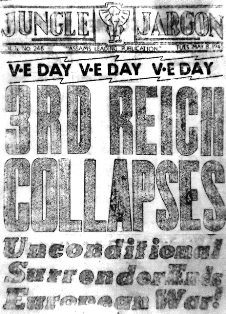 Jungle Jargon "Assam's Leading Publication" from V-E Day. Jungle Jargon was a typewritten newsletter published by the 4th Plt. 36TH SPECIAL SER. SOS ROAD. It contained war news from various sources, this particular copy devoted to the German surrender. Shared by Reece L. Lewing, Jr.  Adventure on the Stilwell Road Fom the November 1957 issue of Popular Mechanics comes this story by Adrian Cowells of Oxford and Cambridge university students' expedition which included traversing the Stilwell Road from Assam to the junction with the Burma Road.  The Road That Couldn't Be Built It says it couldn't be built, but by the time this article appeared in the May 1945 wartime issue of Popular Mechanics, the Ledo Road had already been completed.  Heroes of the Hump A story of 'The Hump' from the July 1944 wartime issue of Popular Mechanics. It is a story of "exceptionally outstanding performance in the face of almost insurmountable odds."  Oil for the Tanks in China Another story from Popular Mechanics, this one about the oil pipeline from India to China. The tanks are not the armored kind, but instead those on planes, trucks, etc.  Monsoon Salvage This Popular Mechanics story is about the Air Service Command and their efforts to salvage fighters and bombers that crash or ditch. More often than not they are in almost inaccessible areas that require some creative methods to recover all that can be salvaged. Story and photos by members of the Air Service Command.  Flying Tigers Christmas Battle Flying Tiger Roy Grinnell's personal account of his time with the American Volunteer Group fighting in the skies over China and Burma in the early days of World War II. He specifically recounts "The Christmas Day battle that began a legend." The legend of the Flying Tigers. Though in action just six months, the famous Flying Tigers racked up an incredible record against the militarily superior Japanese in one of the most heroic sagas in aviation history.  William Fuchs' Photos Over one hundred photos from the memorabilia of William Fuchs, a member of the 330th Engineers, working on the Ledo Road. William was sketched by famous CBI artist Milford Zornes.  Wm. Warren's Memorabilia Photographs and other memorabilia brought from CBI by William Warren. Included are some interesting pillows from U.S. camps, immunization records, China Theater orders and a history of the 69th Medical Depot Co. Shared by Brian Warren.  Knight Hill is Taken Another account of the battle in which 1st Lt. Jack L. Knight of the 124th Cavalry, Mars Task Force, gave his life fighting the Japanese in Burma. For his actions he was posthumously awarded the Medal of Honor, the only one given in the CBI Theater. Related: Jack Knight - Medal of Honor 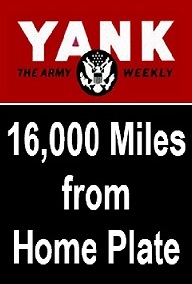 16,000 Miles From Home Plate This YANK Magazine article by Dave Richardson tells the story of a USO troupe of Major League Baseball players on a tour of the CBI Theater. Joined by baseball writer Arthur Patterson, Buddy Lewis, Paul Waner and Luke Sewell tell of their travels and talks with G.I.'s. 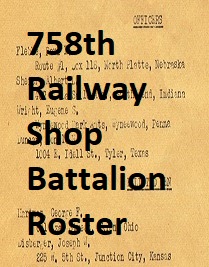 758th Railway Shop Battalion Rosters of the 758th Railway Shop Battalion in CBI. Shared by Deborah Lawlor, whose father Francis J. Moran, Jr. was a member of the battalion.  Apocalypse Then Raymond J. Kania was tail gunner in the B-24 bomber "Apocalypse" of the 10th Air Force in the CBI Theater. During his 18 months overseas he flew on 41 missions including the longest mission over water to a target (over 7 hours to reach the target). He is credited with bringing down three Japanese planes with four "probables" and earned the Air Medal with Oak Leaf Cluster. 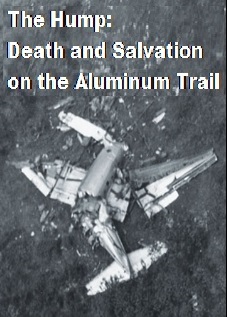
The Hump: Death and Salvation on the Aluminum Trail So many planes crashed while attempting to navigate the Himalayas between India and China, known as "The Hump," that some called it the "aluminum trail," saying you could navigate the route by following the wreckage of crashed planes. This story from an issue of World War II magazine tells the story of the brave men of a search and rescue squadron, tasked with searching for and bringing back survivors by any means possible, even risking their own lives. 
The Road Gang Another of the many "local" newspapers for the men in CBI. As the name implies, this one was for the men building the Ledo Road. Shared by Jim Golub on behalf of his father, V. James Golub, who served along The Road as a member of the 700th Military Police Co. 
James Antell Memorabilia James H. Antell served in the U.S. Army Air Corps in CBI as an Aircraft Maintenance Mechanic. Among his memorabila presented on these pages are training exercises and other documants related to his work and service. Many photographs show his time in and around his base at Karachi, India. Photographs and memorabilia proudly shared by James Antell's daughter, Jeanne A. Timmerman. 
Herb Fisher's P-40 Test pilot Herb Fisher flying his 2500th P-40. Herb served in CBI training Flying Tigers pilots. The photo is a link to more information on Herb's career. 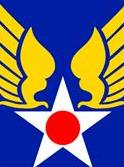
World War II Diary of Robert Mahler Robert Mahler wrote an extensive diary of his experiences in the China-Burma-India Theater during World War Two. Unfortunately, much of it was lost and all that remains are these first fifteen pages. The incomplete diary is still an interesting look at a young man's journey to CBI. He wrote with the flair of a novelist, the wonder of his adventure, and a frankness that defied the horror these brave men faced. Robert's diary shared by his son Paul Mahler. 
George Kierstead Photos George Kierstead was an aircraft maintenance mechanic at the 1340th Army Air Force Base Unit in Kunming, China. He photographed the most everyday aspects of his service in CBI, which makes this group of photos unlike most. Photographs shared by Paul Nash. 
WAC War Correspondent Vernelle 'Ve' Grable was a WAC assigned to the India-China Division of the Air Transport Command. She worked on the Division's newspaper "Hump Express." She saved and brought home many photos taken for the newspaper and they are shared here courtesy of her daughter Beverly and son-in-law Cliff. 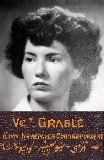
Vernelle 'Ve' Grable During World War II, Ve’ enlisted in the Women's Army Corps and served as a War Correspondent in the China-Burma-India Theater. She was stationed in Calcutta, India as a reporter for the Hump Express GI newspaper. Here are her story and photos shared by her daughter Beverly and son-in-law Cliff. 
Wendall Phillips As a 21-year-old radio operator for the U.S. Army Air Forces in the European Theater, Wendall was shot down in 1944 and captured by the Germans. Then, after escaping, he was sent to fight in the China-Burma-India Theater and landed in a Japanese prisoner of war camp, where he was tortured. Read more about this remarkable man. 
Walter Ryan Memories Walter Ryan served with the 885th Ordnance Company along the Ledo Road. Photographs and more of his memories are featured on this page. Also, three of the hundreds of letters he wrote to his wife during his two years in CBI. 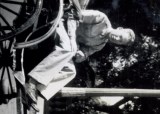
Olaf Gabrielson CBI Photos "Gabe" Gabrielson photographed much of what he saw in CBI, including those he served with during more than two years in the theater. Here, his son John shares those photos in the hope that any family members or friends might have access to them. They are identified based on notations Gabe put on the photos. Each photo has a month/year, location, and name/description. 
Earthquaker: Byron Hill Byron Hill served as pilot of the B-25 Mitchell bomber "Silver Streak" in the 10th Air Force, 12th Bombardment Group (The Earthquakers) in CBI. He earned the Air Medal with Oak Leaf Clusters. His story in pictures is shown here along with a link to another story about his brother in the ETO. 
Where The Dawn Comes Up Like Thunder - Memoir of an Army Nurse Beatrice K. Smith (Beatrice Kinley Tourin) served in the U.S. Army Nurse Corps in the CBI Theater of World War II. She nursed wounded soldiers at the 69th General Hospital at Ledo, Assam, India and later at the 73rd Evacuation Hospital in Burma. In 1983, Bea wrote this memoir of her time in the Army. It vividly recounts the experiences and sacrifices of a woman who bravely served just a few miles from the front lines. You will almost certainly shed a tear as you read her story of triumph and tragedy. Shared by her daughter, Katherine Anttila. 
World War II Photo Album of Julius Palmer Edwards Julius P. Edwards's World War II Photo Album helps to visually inform the story of his service years with a B-29 Bomb Group from 1943-1945. (Please also see the narrative Memoir of Julius Edwards.) Julius was a corporal during the War in the 468th Bomb Group (794th Bomb Squadron), of the 58th Bomb Wing, XXth Air Force, which was part of Operation Matterhorn in India and China and then operated from Tinian. 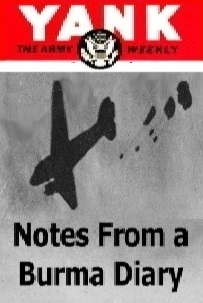
Notes from a Burma Diary Another story by YANK's Dave Richardson who was with Merrill's Marauders in Burma. 
In An Alien City: American Soldiers in Wartime Calcutta (1942-1946) This article by Suchintan Das explores the American soldier's experience in wartime Calcutta and argues several points arising from their presence, including the globalizing nature of the Second World War by looking at Calcutta as a site of spontaneous and uneven cultural exchange where the U.S. soldiers functioned as national emissaries and wartime cultural conduits. 
Col. Charles. S. Davis Archive Charles S. Davis worked with Lewis A. Pick on the Missouri River flood project. When the Army called upon Pick to command the Ledo Road project, he surrounded himself with his trusted assistants, including Col. Charles S. Davis, who served as Gen. Pick's Executive Officer and later as Commanding Officer of Motor Transport Service delivering trucks, supplies, and war materials to China. Col. Davis saved many Signal Corps photos taken by the 164th Signal Photo Co. which was assigned to CBI. Those photos and much more are featured here courtesy of Joe Davis. 
Engineers Perform Daily Miracle on Ledo Road This article from the March 20, 1944 issue of the Kansas City Times by Charles A. Grumich, a former Kansas Citian who worked for the Associated Press before he left for assignments in New York and overseas, tells of his journey with the first convoy to China over the Ledo and Burma Roads. From the collection of Col. Charles S. Davis shared by Joe Davis. 
Mountbatten Visits Myitkyina Photos and documents related to SEAC Commander Lord Louis Mountbatten's visit to Myitkyina, Burma. From the collection of Col. Charles S. Davis shared by Joe Davis. 
Reputation Leads to Assignment for Col. Lewis A. Pick This is a story about Lewis A. Pick and his reputation prior to the war for expediting solutions. From an article appearing in the March 22, 1944 issue of the Kansas City Times. From the collection of Col. Charles S. Davis shared by Joe Davis. 
Runaway C-47 Chases Pick Off Runway Gen. Pick was speaking to a soldier about the dangers of working on the Ledo Road when a C-47 runaway headed his way and crashed into his plane parked nearby. This page features the story from CBI Roundup as well as pictures from the collection of Col. Charles S. Davis shared by Joe Davis. 
First Convoy to China in Three Years The correspondents of YANK - The Army Weekly cover the first convoy over the Ledo and Burma roads bringing supllies and war material to China for the first time in three years. This story is from the March 10, 1945 CBI Edition of YANK. The cover of the issue is shown at left. From the collection of Col. Charles S. Davis shared by Joe Davis. 
Looking Back with the 20th General Hospital This article by John Hayden in the University of Pennsylvania's Health Affairs magazine spring 1984 edition features doctors of the 20th General recalling their time with the hospital in India during World War II. Included are many pictures of the 20th General in action. From the collection of Col. Charles S. Davis shared by Joe Davis. 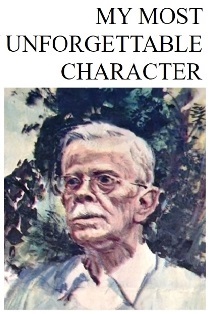
My Most Unforgettable Character Sterling Seagrave writes about his father, Gordon Seagrave, the Burma Surgeon, recalling the difficult times in Burma before, during and after World War II. Special insight from the son of a legend. The article appeared in Reader's Digest and is from the collection of Col. Charles S. Davis shared by Joe Davis. 
Air Bases in CBI A list of Air Bases in the CBI Theater including those in China, Burma, India and French Indo-China. From the collection of Col. Charles S. Davis shared by Joe Davis. 
Map of India and Ceylon A wartime civilian map of India and Ceylon. Map image file is large and will require time to load. Map can be enlarged three times screen size. From the collection of Col. Charles S. Davis shared by Joe Davis. 
Former Omahan Cited by Brig. Gen. Pick For his work before the war on the Missouri River project, Col. Charles S. Davis was awarded the Legion of Merit "for exceptionally meritorious conduct in the performance of outstanding service and achievements" by Gen. Lewis A. Pick. From the collection of Col. Charles S. Davis shared by Joe Davis. 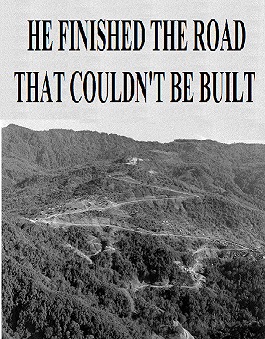
He Finished The Road That Couldn't Be Built The Ledo Road, through the wilderness and over great mountains, was the toughest job of General Pick of the Army Engineers, but he conquered malaria, mud and roaring rivers; drove his gallant men through seeming impossible obstacles to complete what the GIs called "Pick's Pike" ahead of schedule. Adapted from an article appearing in the May 27, 1945 issue of the Kansas City Star, from the collection of Col. Charles S. Davis. Shared by Joe Davis. 
World Battlefronts: When A Hawk Smiles This article from the December 6, 1943 issue of TIME magazine tells the story of General Claire L. Chennault and the early days of the Fourteenth Air Force. 
Bringing World War II to Life Through the Photos and Portraits of Artist Milford Zornes Milford Zornes was a nationally known artist prior to his being drafted into the Army/Air Corp in late 1942. When Milford passed away in 2008 at age 100 he left behind a wonderful collection of material from his World War II experience in CBI. This included innumerable photos and 40 to 50 portraits of his fellow soldiers and even a few locals he met where he was stationed or visited while on assignment. In this story, Milford's son-in-law, Hal Baker tells of his search for families of the people in the sketches. A remarkable story of perseverance. 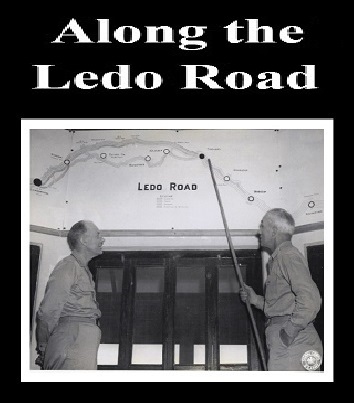
Along the Ledo Road This page features almost one thousand photos taken by the U.S. Army Signal Corps. 164th Signal Photo Co. They have been sorted to tell the story of the Ledo Road from the beginning to convoys arriving in China. The photos are from the Col. Charles S. Davis Archive which contains the raw, unsorted, unedit versions of these photos. Col. Davis was Executive Officer of the Ledo Road project and therefore received copies of the photos which he brought back with him. The photos were shared by the colonel's son, Joe Davis. 
Report on Stilwell-Burma Road "This report is submitted on the LEDO (Stilwell)-Burma Road following a trip made over it in convoy with the 172nd General Hospital (Convoy #139) from LEDO to KUNMING. The journey commenced 9:10 AM on May 19, 1945, from LEDO and finished at the MTS Convoy Terminal (Camp Combs), outside KUNMING, at 5:15 PM, May 31, 1945." The report contains an almost mile-by-mile diary of points along the road. 
Aerial Maps of Ledo Road Aerial maps provided relatively up-to-date real information about the area photographed. A plane flies over the area while a camera takes sequential photos. After the photos are developed, intelligence officials then piece together the maps and mark towns, mountains, rivers, enemy installations, etc. Each of these photos of the Ledo Road was numbered in sequence and have been placed in that order on the web page. 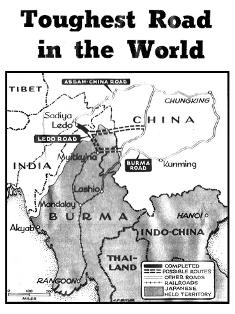
Toughest Road in the World This story by Tillman Durdin of the New York Times appeared in the March 19, 1944 issue. A brief recap of the road building effort from the start to the time the story was written. 
CBI News on the Homefront Plenty of moms saw their sons off to some far-off place to fight World War II. One such mom in Kansas City, Missouri, Josephine Smith Davis, saved newspaper clippings about where her son was serving and put them in a scrapbook. That place was the CBI Theater and her son was Col. Charles S. Davis. There are 71 pages of her scrapbook here in large format for reading. 
My Weekly Reader Chances are you saw these in school in your younger days. This one is from March 1945 during World War II and has a story about the Stilwell Road and how kindness helped to build the road. A good example of how the war touched almost every aspect of life. From the scrapbook of Josephine Smith Davis, proud mother of Col. Charles S. Davis, who served with Gen. Pick on the Ledo Road project and later commanded the Motor Transport Service convoying supplies to China. Shared by Joe Davis. 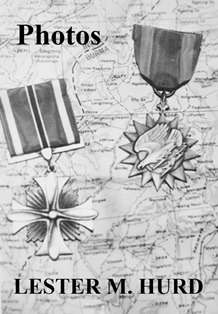
Lester M. Hurd Photos As a C-47 combat cargo pilot Lester Hurd flew supplies like food, fuel, and ammunition, as well as personnel, wherever they were needed by American troops and allies in the theater. During non-working hours he photographed and developed his own pictures, shown here along with his story. Shared by his son, David Hurd. 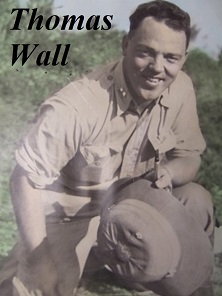
Thomas Wall - Malaria Control Besides the fight against the Japanese, Americans in CBI battled a host of diseases, the most prevalent of which was malaria. Mosquitoes were ever-present in the damp climate of India and Burma. Thomas Wall was one of the men who guided the fight against malaria-carrying mosquitoes in his role as malaria control officer. In this memoir written by his daughter Ann MacKay for his 92nd birthday, his time in the U.S. Army is recounted from training to discharge. Included is background information on CBI and much about the fight against malaria. 
AAF Cloth Chart Kunming-Chabua A silk map of the area between Kunming, Yunnan, China and Chabua, Assam, India made for the U.S. Army Air Force. The map is separated into east and west portions, with one being printed on one side of the cloth and the other on the reverse side. On the eastern portion side are rescue messages in Bengali, Hindustani (Urdu), Kachin, Lisu, Burmese, and Chinese. These were to assist downed flyers. There is also English translation. Cloth Chart shared by Joe Davis, son of Col. Charles S. Davis, Jr., Executive Officer on the Ledo Road. 
Burma Death Railway Rather than a road, the Japanese built a railroad line from Thailand to Burma to supply their troops. They used forced civilian and POW labor under the worst conditions imaginable. Tens of thousands died during construction. This brief look at what became known as the "Death Railway" is condensed from Wikipedia. 
William Dale Memoir of India Karen Dustman shared this portion of the family history she compiled, which tells of her father's service in India in the CBI. William Dale was assigned to the 115th Quartermaster Baking Co. and made bread to support 7,500 troops. William's story includes pictures of India and the baking crew. 
Baksheesh Bugle This rough newspaper was published by and for the men of the Air Depot at APO 493, located at Dudhkundi, Kalikunda, Kharagpur and Piaradoba, India. It contains mostly local news of the Air Depot. The newspapers were apparently sent to the U.S. by Sgt. Leo A. Schocke of the 2472nd Quartermaster Truck Co. He is mentioned and has underlined his name in the sports section of the July 8th edition. 
Negro Soldiers Laugh, Conquer Burma Jungle A homefront newspaper clipping of the story, "Negro Soldiers Laugh, Conquer Burma Jungle." Originally published in the Chicago Daily News, the writer follows Black American soldiers on river patrol duty and at work on the Ledo Road. Needless to say, it is not an accurate account of the plight of these men working in the jungles of Burma. |
|
|
|
Type a word or phrase below to search this site . . . |
|
Officially established 22 June 1942, the China-Burma-India Theater (CBI) is often referred to as The Forgotten Theater of World War II. Of the 12,300,000 Americans under arms at the height of World War II mobilization, only about 250,000 (two percent) were assigned to the CBI Theater, making CBI Veterans are Unique more than just a slogan. Initially important to the Allied war effort because of plans to invade Japan from the Chinese mainland, it became mainly an effort to keep China supplied and in the war. Allied forces, mostly British, Chinese, and Indian, engaged large numbers of Japanese troops that might have otherwise been used elsewhere. The less than 3,000 volunteer soldiers who became famous as Merrill's Marauders, and the units of the Mars Task Force, were the only dedicated U.S. ground fighting forces in the Theater. America's role in CBI was to support China by providing war materials and the manpower to get it to where it was needed. The majority of Americans in CBI worked to bring lend-lease supplies to China. The Flying Tigers fought the Japanese in the air over China and Burma. Army Air Forces flew supplies Over The Hump from India to China. Merrill's Marauders and the Mars Task Force fought through the jungles of Burma. Army Engineers built the Ledo Road to open up a land supply route. |
|
|
|
Share Your CBI Memorabilia
Most of these sites were created using World War II era publications and printed material from CBI. Some of the material was provided by people like you. Your CBI story, photos and other memorabilia is of interest to veterans and friends of CBI and is an important part of history. This history can be preserved and published to the Internet so that anyone interested can readily access information about the CBI Theater. You don't have to part with your piece of CBI history as good photocopies or scans are acceptable. If you have photos or memorabilia from CBI and would like to share it and your story with veterans and others interested in CBI, please click below to send an e-mail. |
On the CBI Wall of Honor the men and women who served in the China-Burma-India Theater are remembered and honored. Their photograph, unit or area of service, and their wartime hometown are shown. The photo is also a link to more information on their service (when available). To honor your relative or other CBI veteran, use the link below to submit a photo and be sure to include their full name, unit or area, and wartime hometown. |
|
|